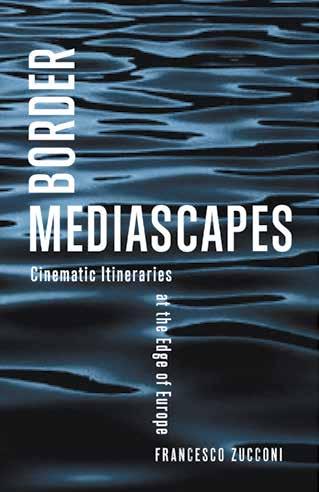

SALES AND MARKETING
University of Minnesota Press 111 Third Ave. South, Suite 290 Minneapolis, MN 55401



SALES AND MARKETING
University of Minnesota Press 111 Third Ave. South, Suite 290 Minneapolis, MN 55401
in alphabetical order by author
Phone: 612-301-1990
ump@umn.edu


www.upress.umn.edu
@UMinnPress on Bluesky, Facebook, Instagram, LinkedIn, and X.
Podcast: z.umn.edu/ump_pod. Available on Apple, Spotify, YouTube, and most places podcasts are published.
Assistant Director for Book Publishing Emily Hamilton eph@umn.edu
Publicity Director and Assistant Marketing Manager Heather Skinner presspr@umn.edu
Senior Sales Manager Matt Smiley mwsmiley@umn.edu
Digital Marketing Manager Margaret Sattler sattl014@umn.edu
Lowell Duckert
Marketing and Engagement Specialist Shelby Connelly schir080@umn.edu
Publicity Associate Alena Rivas rivas118@umn.edu
Exhibits and Marketing Assistant Carina Bolaños Lewen bolan162@umn.edu
p33 Günther Anders The Obsolescence of the Human
p23 Peter Christen Asbjørnsen and Jørgen Moe The Complete and Original Norwegian Folktales of Asbjørnsen and Moe
p48 Brian Bartell On the Eve of the Cybercultural Revolution
p52 Lisa Björkman Drama of Democracy
p11 Kristin Bluemel Enchanted Wood
p10 James Francisco Bonilla An Eye for an I
p41 Umayyah Cable Mainstreaming Palestine
p39 Iokepa Casumbal-Salazar First Light
p18 KJ Cerankowski Nothing Wanting
p45 Joyce Suechun Cheng The Persistence of Masks
p49 Joshua Comaroff Spectropolis
p9 Sasha Davis Replace the State
p58 Christopher R. Donohue and Alan C. Love Perspectives on the Human Genome Project and Genomics
p21 Ann Druyan A Famous Broken Heart
p54 Lowell Duckert Arcticologies
p24 Janis A. Fairbanks Sugar Bush Babies
p55 Kimberley Kinder Invisible Exile
p43 Cameron Kunzelman Everything Is Permitted
p7 Akira Kurosawa Long Take
p46 Derek Lee Parascientific Revolutions
p35 Giuseppe Longo and Adam Nocek The Organism Is a Theory
p28 Jessica Lopez Lyman Place-Keepers
p5 Mary Lucia What Doesn't Kill Me Makes Me Weirder and Harder to Relate To
p57 Mehammed Amadeus Mack The Eurabia Myth
p27
p31
Larry Millett Mysterious Tales of Old Minneapolis
Larry Millett Mysterious Tales of Old St. Paul
p38 Mark Minch-de Leon Indigenous Inhumanities
p50 Rebecca Monteleone The Double Bind of Disability
p4 Shin'ichirō Nakamura, Takehiko Fukunaga, and Yoshie Hotta The Luminous Fairies and Mothra
p42 Elizabethe Payne and Melissa J. Smith Queer Kids and Social Violence
p61
Erica Rand Skating Away from the Binary
p61 Andrea Righi Three Economies of Transcendence

For more contact information, please see the “Contact Us” section of our website at www.upress.umn.edu.
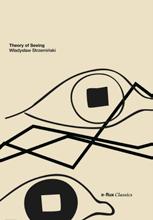
p60 Grant Farred The Prettiest Woman
p62 M. Beatrice Fazi, Alexander R. Galloway, Matthew Handelman, and Leif Weatherby Digital Theory
p26 Robert M. Frame III Making Mill City
p34 Olga Goriunova Ideal Subjects
p36 Mark Griffiths Checkpoint 300
p23 Linda LeGarde Grover A Song over Miskwaa Rapids
p25 David Hakensen Her Place in the Woods
p44 Heidi Hart and Beate Schirrmacher Piano Decompositions
p40 Joanna Hearne and Karrmen Crey By Their Work
p30 Carrol L. Henderson A National Legacy
p51 Leon J. Hilton Counter-cartographies
p17 Teréz Iacovino and José López Serra Vaivén
p6 Pernille Ipsen My Seven Mothers
p32 Maria Janion The Bad Child
p16 Daniel Heath Justice Our Fire Survives the Storm
p12 Kathleen Rooney, Beth Rooney, and Betsy Bowen Leaf Town Forever
p60 Michael Rubenstein Pipeline Noir
p29 Debra J Stone The House on Rondo
p62 Władysław Strzemiński Theory of Seeing
p37 Jameson R. Sweet Mixed-Blood Histories
p8 Anna Terwiel Prison Abolition for Realists
p53 Eric A. Vázquez States of Defeat
p20 Antoine Volodine The Inner Harbour
p19 Jeffrey Andrew Weinstock The Horror Theory Reader
p47 Colin Williamson Drawn to Nature
p22 Meredith Willson Eggs I Have Laid
p31 Douglas Wood Deep Woods, Wild Waters
p59 Dustin B. Wygant and Martin Sellbom Forensic Mental Health Assessment With the MMPI-3
p15
Kao Kalia Yang and Jen Shin The Blue House I Loved
p56 Francesco Zucconi Border Mediascapes
NATIONAL TRADE AND LOCAL INTEREST pp4–31
SCHOLARLY pp32–62
JOURNALS pp63–65
American Studies 17, 38, 41, 48, 53
Anthropology 36, 39, 45, 52
Art 11, 17, 28, 44–45, 62
Children's Picture Books 12–15
Digital Culture 34, 43, 62
Disability Studies 50–51
Education 42
Environment 12, 25, 30–31, 44, 54, 60
Fiction 4, 20–21, 23, 27, 29, 31
Gender and Sexuality 6, 18, 28, 42, 57, 61
Geography 9, 36, 55–56
History 6, 11, 25–26, 31–32, 37, 45, 58
Literary Criticism 11, 16, 19, 54–55
Media and Film 7, 40–41, 43, 47, 56, 60
University of Minnesota Press fulfillment operations are through the Chicago Distribution Center.
The address is:
University of Minnesota Press
c/o Chicago Distribution Center 11030 South Langley Ave. Chicago, IL 60628
Phone: (800) 621-2736 or (773) 702-7000
Fax: (800) 621-8476 or (773) 702-7212
We provide pubnet access. Our address is: PUBNET@202-5280.
For our current discount structure, please contact our sales manager at mwsmiley@umn.edu.


Minnesota and Regional Interest 5, 10, 14–15, 23–31
Music 5, 22
Native American and Indigenous Studies 16, 23–24, 37–40
Memoir and Biography 5–7, 10, 22, 24–25, 30–31
Paperback Reprints 21, 23, 31
Philosophy and Theory 8, 32–35, 58, 60–62
Political Science 8, 52
Psychology 59
Race and Ethnicity 10, 17, 28–29, 48, 57
Science and Technology 33, 35, 46–47, 50, 58
Urban Studies 49
We use three discount structure classes: Trade, Short, and Super Short. Short titles are marked with “x”, super short titles are marked “xx”, and trade titles are not marked.

Books in this catalog are listed with their retail e-book ISBNs. Digital editions of most University of Minnesota Press titles are available through a variety of retailers. Our list is continually updated at z.umn.edu/aboutebooks.
More bookseller information is on the inside back cover.

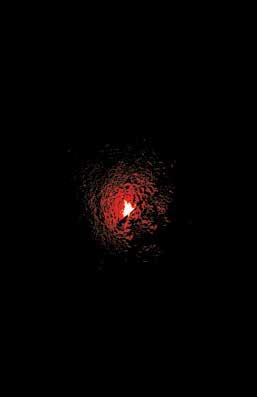


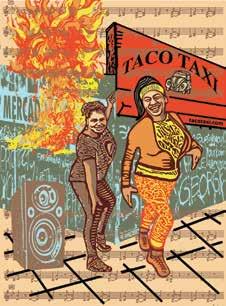
TRANSLATED BY JEFFREY ANGLES
The original story that hatched Mothra, one of the most beloved monsters in the “kaijuverse”—available in English for the first time
Mystical and benevolent, the colossal lepidopteran Mothra has been one of the most beloved kaiju since 1961, when The Luminous Fairies and Mothra was originally published in Japanese. Commissioned by Tōhō Studios from three of Japan’s most prominent postwar literary writers (Shin’ichirō Nakamura, Takehiko Fukunaga, and Yoshie Hotta), the novella formed the basis for the now-classic monster film Mothra, with a protagonist second only to Godzilla in number of film appearances by a kaiju. Finally available in its first official English translation, The Luminous Fairies and Mothra will captivate ardent, longtime fans of the films as well as newcomers.
Written just months after the largest political demonstrations Japan had ever seen, The Luminous Fairies and Mothra reflects the rebellious spirit of the time. In this original story, explorers visit a South Pacific island and capture a group of fairies, inciting the fury of the goddess Mothra, who sets out for
Japan on a mission of rescue and revenge. Expressing a powerful social stance about Japan’s need to chart its own foreign policy during the Cold War, the novella’s political message was ultimately toned down in the Tōhō Studios film. Through this translation, Anglophone audiences will discover Mothra as a figure of protest fiction intricately reflecting the complex geopolitical situation in early 1960s Japan.
The Luminous Fairies and Mothra is translated into lively prose by Jeffrey Angles, who also wrote an extensive afterword about the novella’s cultural context, the unusual story of its composition, and the development of the 1961 film. Following Angles’s best-selling translation of the original Godzilla novellas, this new work will once again delight kaiju fans everywhere.



Shin’ichirō Nakamura (1918–1997) was a critic, scholar, and author of dozens of novels.
Takehiko Fukunaga (1918–1979) was a prolific poet, translator of French fiction, and novelist.
Yoshie Hotta (1918–1998) was an essayist and novelist involved in leftist politics and the international nonalignment movement of the 1960s.
Jeffrey Angles is professor of Japanese literature at Western Michigan University. He is author of three books and translator of several works including Godzilla and Godzilla Raids Again by Shigeru Kayama, also published by the University of Minnesota Press.
SCIENCE FICTION
$19.95 Paper ISBN: 978-1-5179-2001-2
$19.95 Retail e-book ISBN: 978-1-4529-7494-1
JANUARY 2026
120 pages 2 b&w illustrations 5 1/2 x 8 1/4
Retail e-book files for this title are screen-reader friendly with images accompanied by short alt text and/or extended descriptions.
MARY LUCIA
An iconic rock DJ of the Twin Cities tells her harrowing story of being stalked while living her very public life
“A compulsive, heart-pounding read from a true rock and roll heart. Mary Lucia has been terrorized and let down and disrespected and underestimated, yet here she is, raw and real with her spirit shining, braver and kinder than ever—yes, you need to read this book.”
—Rocky O’Riordan, The Pogues
What’s it like to be in the public spotlight when it just might get you killed? For Mary Lucia, becoming a wildly popular rock DJ meant connecting with a multitude of fans through a shared love of music and deep cuts. But for one listener, that connection became a dangerous obsession, catapulting Lucia into the terrifying three-year nightmare that she chronicles in this raw, wry, and profoundly courageous memoir. With electrifying wit and anger, Lucia shares her experience of navigating constant terror while life absurdly goes on: interview rock stars, curate a radio show song list, judge high school battles of the band, kick a drug addiction cold turkey . . . all while fearing what might be waiting in her mailbox or who might be waiting on her front step or at her back door.
Lucia was no stranger to inappropriate or weird contact from fans, but things turned sinister when ten pounds of raw meat were delivered to her at work, followed by a steady stream of ominous letters, cards, packages, and messages. When the letters included threats to her dogs’ safety, she tried to get help, but without a name and return address on these communications there was nothing she could do. As the stalker’s actions escalated, Lucia felt more and more isolated. Police responding to her 911 calls were insensitive and dismissive, and even her friends implied that being stalked was just a hazard of her high-profile job and her highenergy personality. No one seemed to take seriously the danger she faced.
Inseparable from this ordeal is the story of how Mary Lucia became the notorious radio malcontent known by so many avid listeners. From the good, bad, and weird of growing up in her eccentric family to drugs, death, and dogs, Lucia finally shares her life on her own terms in What Doesn’t Kill Me Makes Me Weirder and Harder to Relate To. Applying her signature dark humor to her own traumatic experiences, Lucia’s memoir is idiosyncratic, bold, and—ironically—relatable.
WHAT DOESN , T KILL ME MAKES ME WEIRDER AND HARDER
TO RELATE TO


Mary Lucia is a media broadcast personality, writer, actor, and voiceover artist. She worked at The Current from 2005 to 2022 and was well known for her unconventional style and expansive music knowledge. She hosted the local music show Popular Creeps, twice a Minnesota Music Award winner for Best Locally Produced Show, and she was voted best FM radio personality by City Pages seven times. She is currently the program advisor at the University of Minnesota’s Radio K.
MEMOIR/MUSIC
$22.95 Cloth/jacket ISBN: 978-1-5179-1886-6
$22.95 Retail e-book ISBN: 978-1-4529-7421-7
NOVEMBER
160 pages 5 1/2 x 8 1/4
Retail e-book files for this title are screen-reader friendly.
PERNILLE IPSEN
Seven women raise a child together while redefining their place in society at the beginning of the Women’s Movement in Denmark in the 1970s
“This book is a treasure, especially for a second-wave American feminist who was thrilled to learn of the boldness and courage of our Danish sisters at the very start of the 1970s women’s movement. I can’t recommend it highly enough.”
—Vivian Gornick, author of Fierce Attachments
“This memoir reads like a novel. It’s about many things— feminism, collective living, family, and especially mothering, as well as the extraordinary optimism of Denmark in the 1970s. My Seven Mothers certainly is not all happiness and light, but that makes it even more moving, and as an American feminist I felt a sense of recognition infused with my own memories.”
—Linda Gordon, author of Seven Social Movements That Changed America
On New Year’s Eve in Copenhagen in 1972, seven women had a child together: one gave birth and six others attended. They had met a year earlier at a feminist women’s camp on a small island and now, with about twenty other women’s liberationists, they occupied three dilapidated apartment buildings in the center
of Copenhagen. One became the country’s first Women’s House, the nerve center of the Women’s Movement in Denmark, and the other two were women-only communal living spaces that were Pernille Ipsen’s first home. In this intimate portrait of life during the exhilarating early days of women’s liberation in Scandinavia and dramatic social change around the globe, she tells the stories of these seven women, her seven mothers.
Ipsen recounts her mothers’ history, from the passions and beliefs they shared to the political divisions over sexual identity that ultimately split them apart. As she deftly reflects the practical and emotional realities of her mothers’ women-centered life, Ipsen presents an engrossing picture of intersecting lives that, half a century ago, raised questions we still grapple with today: What is a family? Who is a woman? And who gets to decide?
A chronicle of gender, sexuality, and feminism as it was constructed, contested, and lived, My Seven Mothers is an eye-opening account of the challenges and possibilities connected with liberation and radical social change during the 1970s. In this time of fierce struggles over family, sexuality, and child-rearing, it reminds us that new worlds are always possible.

Pernille Ipsen was professor of gender and women’s studies and history at the University of Wisconsin–Madison for fifteen years and is now a full-time writer. The Danish-language version of this book, Et åbent øjeblik (An open moment), was published in 2020 and was awarded the Montana Prize for literature, one of Denmark’s top literary prizes.
Tiina Nunnally is the award-winning translator of more than seventy books from the Scandinavian languages, including Sigrid Undset’s epic tetralogy Olav Audunssøn, also published by the University of Minnesota Press. She was appointed Knight of the Royal Norwegian Order of Merit for her contributions to Norwegian literature in the United States.
$29.95 Cloth/jacket ISBN: 978-1-5179-1779-1
$29.95 Retail e-book ISBN 978-1-4529-7380-7
OCTOBER
360 pages 105 b&w illustrations 20 color plates 1 map 6 x 9
TRANSLATED BY ANNE M C KNIGHT
A multifaceted portrait of the great Japanese director
For years, Akira Kurosawa resisted writing about himself. “It would turn out to be nothing but talk about movies,” he said. “In other words, take myself, subtract movies, and the result is zero.” The memoir he finally started serializing in 1978, Something like an Autobiography, ended with Rashomon, the film that launched him on the world’s stage in 1950. Long Take, first published in Japan shortly after Kurosawa’s death in 1998, at last tells the story of the rest of his life.
By turns intimate, provocative, and revealing, Long Take creates a dynamic portrait of Kurosawa from his own writings; his conversations with writer Inoue Hisashi and director Yamada Yōji; and essays by his daughter and colleague Kurosawa Kazuko, who details the collaborative history of the “Kurosawa crew.” It features a wealth of industry lore, cultural reference points, inside
jokes with other filmmakers and writers, and backstories for his own productions, from the earliest to the last. Of particular interest to all cinephiles is an annotated list of Kurosawa’s 100 favorite films.
A survey of Kurosawa’s prodigious career, this book situates the visionary in the media milieu of his youth, in the literature and performing arts of twentieth-century Japan and Hollywood, and among the myriad films he loved, admired, and referenced, including Japanese silent film and comedy as well as productions from India, Iran, and Soviet-era Russia. Now available to English readers for the first time, Long Take offers a lasting picture of the peerless filmmaker in his element.







TRANSLATED BY Anne
McKnight


Akira Kurosawa (1910–1998) was a Japanese filmmaker, widely considered one of the most important and influential in the history of cinema. He directed thirty films, including Drunken Angel (1948), Rashomon (1950), Seven Samurai (1954), The Hidden Fortress (1958), and Kagemusha (1980).
Anne McKnight is associate professor of Japanese and comparative literature at the University of California, Riverside. She is author of Nakagami, Japan: Buraku and the Writing of Ethnicity, also published by the University of Minnesota Press.
BIOGRAPHY/CINEMA
$24.95 Paper ISBN: 978-1-5179-0329-9
$100.00xx Cloth ISBN: 978-1-5179-0328-2
$24.95 Retail e-book ISBN: 978-1-4529-7362-3
DECEMBER
240 pages 32 b&w illustrations 5 1/2 x 8 1/2
ANNA TERWIEL
A lucid guide to the radical politics of prison abolitionists
There is growing recognition that mass incarceration is unjust and undemocratic, but when the subject of prison abolition is raised, a ready chorus emerges to declare that such a project is naïve, idealistic, and out of touch with reality. Anna Terwiel challenges this view, carefully examining the work of abolitionist thinkers and activists since the 1960s to argue that prison abolition is a realist political project. Abolition, Terwiel shows, is oriented toward practical realities and offers concrete proposals for radical democratic change.
Based on insightful readings of renowned abolitionists such as Michel Foucault, Liat BenMoshe, and Angela Y. Davis, Prison Abolition for Realists illuminates the realist aspects of their approaches as well as the important differences between them. Distinguishing between paranoid, purist, and agonistic styles of abolitionism, Terwiel argues that an agonistic approach holds the most promise for democratic change to carceral systems. Embodied in the work of Davis, agonistic abolitionism combines radical critique with efforts to build new democratic institutions
while accepting that all political achievements will be imperfect. Pursuing examples of what this looks like in practice, Terwiel explores grassroots transformative justice efforts, like those of Communities Against Rape and Abuse. She also proposes a “right to comfort” to support incarcerated people’s demands for air conditioners in extremely hot prisons, showing how state institutions, civil law, and rights claims can be potential resources for abolitionists.
Nuanced and illuminating, Prison Abolition for Realists affirms abolition’s viability during a time of multiple, ongoing crises. While many despair at the state of the world, Terwiel reveals how abolition offers an actionable politics of the possible. Far from being unrealistic, abolition is an indispensable part of a realist politics.

Anna Terwiel is assistant professor of political science at Trinity College in Hartford, Connecticut. She is codirector of Trinity’s Prison Education Project (TPEP), which offers credit classes to incarcerated people. Her research has been published in Political Theory; Polity; Theory & Event; and New Political Science
POLITICS/ACTIVISM
$24.95 Paper ISBN: 978-1-5179-2040-1
$120.00xx Cloth ISBN: 978-1-5179-2039-5
$24.95 Retail e-book ISBN: 978-1-4529-7481-1
DECEMBER
248 pages 2 b&w illustrations 5 1/2 x 8 1/2
Retail e-book files for this title are screen-reader friendly with images accompanied by short alt text and/or extended descriptions.
SASHA DAVIS
A practical call to action against oppression
“As the United States is being destroyed, spaces are opening up for something new to emerge. Offering urgent lessons and insights, Replace the State explores relational governance as an alternative to systems that no longer serve. Sasha Davis shows how we can move forward to create and claim a truly inclusive, sustainable world.”
—Lisa Fithian, author of Shut It Down: Stories from a Fierce, Loving Resistance
“This indispensable guide speaks to newly activated organizers, those mobilizing on the ground, and seasoned old-timers alike. By illuminating the liberatory practice of replacing the state, Sasha Davis reveals that abolition is a daily effort—one of making meaningful connections, claiming what our communities deserve, and creating lifeaffirming ways of organizing ourselves and our relations with the earth.”
—Laurel Mei-Singh, University of Texas at Austin
Across the globe, millions of people have participated in protests and marches, donated to political groups, or lobbied their representatives with the aim of creating lasting social change, overturning repressive laws, or limiting environmental destruction. Yet very little seems to improve for those affected by rapacious governments. Replace the State
brings new hope for social justice movements by looking to progressive campaigns that have found success by unconventional, and more direct, means.
Sasha Davis, an activist and scholar of radical environmental advocacy, focuses on the strategies of movements, many of them Indigenous, that have occupied contested sites and demonstrated their effectiveness at managing or governing them. Including case studies of resistance to development on Indigenous lands in Hawai‘i, nuclear testing in the Nevada desert, and the U.S. military occupation of Okinawa, he offers insight and direction for those dedicated to protecting and improving the well-being of their communities and beyond.
Davis finds inspiration for genuine political change through social movements that are successfully “replacing the state.”
From contesting environmental abuse to reasserting Indigenous sovereignty, these social movements demonstrate how people can collectively wrest control over their communities from oppressive governments and manage them with a more egalitarian ethics of care.
SASHA DAVIS


Sasha Davis is an activist and professor in the Department of Environmental and Sustainability Studies at Keene State College in New Hampshire. He is author of Islands and Oceans: Reimagining Sovereignty and Social Change and The Empires’ Edge: Militarization, Resistance, and Transcending Hegemony in the Pacific
GEOGRAPHY/ACTIVISM
$19.95 Paper ISBN 978-1-5179-1952-8
$80.00xx Cloth ISBN 978-1-5179-1951-1
$19.95 Retail e-book ISBN 978-1-4529-7376-0
AUGUST
184 pages 3 b&w illustrations 5 1/2 x 8 1/2
Retail e-book files for this title are screen-reader friendly with images accompanied by short alt text and/or extended descriptions.
JAMES FRANCISCO BONILLA
The personal story of a blind Puerto Rican boy in New York who transcends a harrowing childhood to become a lifelong advocate for social justice
“Jovencito, it’s going to be lonely being different and yet strong in this world,” James Francisco Bonilla’s grandmother told him when he was ten. He had come home after defending himself against a bully who had threatened him with violence, making it clear that he didn’t care that James was blind. But despite the isolation James felt in childhood, he would come to commit his life to leveraging his differences and strengths toward a collective fight for justice. James’s memoir, An Eye for an I, is an inspiring account of how he found a path through his own suffering to make a difference for others.
Born with congenital cataracts, James had limited vision in his right eye and none in his left. At age nine, after a classmate hurled a horseshoe at his face in a racially motivated assault, James’s right eye was injured and he became legally blind. At home, too, he feared physical violence, experiencing the unpredictable outbursts of a single mother suffering from severe mental illness.
Throughout his youth as a Puerto Rican New Yorker, James was continually failed by educational systems that exposed him to one abuse after another. Searching for relief and inspiration, he discovered an unexpected solace in the natural world, spiritual encounters with Mother Earth that led him toward both personal healing and advocacy.
At nineteen, a breakthrough in medical technology restored the sight in his right eye, and James recognized his unique perspective on the struggles of the disabled and marginalized in American life—and his intense will to make a difference. He seeks to understand generational trauma, and in documenting his growth—physically, mentally, and spiritually—his memoir exemplifies the introspection necessary to participate in truly equitable and effective movement building. An Eye for an I presents both James and his aggressors with refreshing nuance and humility, inviting readers to empathize, be inspired, and consider their own potential to be of service in a broken, yet beautiful, world.

Francisco
is
New
Puerto Rican
and retired professor of Hamline University in St. Paul. He has written and presented nationally and internationally on diversity, cultural competence, and leadership, especially on how to diversify environmental organizations.
MEMOIR/SOCIAL JUSTICE
$18.95 Paper ISBN: 978-1-5179-1914-6
$18.95 Retail e-book ISBN: 978-1-4529-7394-4 NOVEMBER
168 pages 8 b&w illustrations 5 1/2 x 8 1/4
Retail e-book files for this title are screen-reader friendly with images accompanied by short alt text and/or extended descriptions.
How women wood engravers helped reshape the visual and literary landscape of modern Britain
Amid the austerities of Depression-era publishing in Britain, urban editors and women artists recognized a unique opportunity to make and sell popular books illustrated with wood engravings. Enchanted Wood focuses on four of these artists—Gwen Raverat, Agnes Miller Parker, Clare Leighton, and Joan Hassall—weaving together their lives and work to tell a compelling and little-known story about a modern art that transformed the lives of both urban and rural women.
In this richly illustrated book, Kristin Bluemel demonstrates how women engravers used wood engraving to redraw professional and personal boundaries for themselves and other women. Depicting realistic scenes of country life, these illustrations are reminiscent of the aesthetic of eighteenth-century artist, naturalist, and print innovator Thomas Bewick even as they present distinctly modern reflections on gender, age, marriage, and motherhood. Reproducing and analyzing
white-line engravings, pen and ink drawings, and rare color engravings from these four artists’ books for children and adults, Enchanted Wood reveals the magnified power and meaning of gentle arts for everyday people and for national patterns of work and play.
Integrating vignettes from Bewick’s natural history with formal, thematic, and cultural analysis of the women’s art as she recovers their medium, oeuvres, and stories, Bluemel shows how wood engraving led Raverat, Miller Parker, Leighton, and Hassall to achieve professional stature, public affirmation, and personal independence. A visually rich history of collective achievement, Enchanted Wood establishes these women engravers as important modern artists and literary figures in their own right.
Engraving a Place for Women
Kristin Bluemel is professor of English and the Wayne D. McMurray and Helen Bennett Endowed Chair in the Humanities at Monmouth University. She is editor of Intermodernism: Literary Culture in Mid-TwentiethCentury Britain and coeditor of Rural Modernity in Britain: A Critical Intervention. Her research for Enchanted Wood was supported by a Leverhulme Visiting Professorship at Newcastle University and a Publication Grant of The Leonard A. Lauder Research Center for Modern Art, The Metropolitan Museum of Art.
LITERARY CRITICISM/VISUAL CULTURE/ART
HISTORY
$29.95 Paper ISBN: 978-1-5179-1477-6
$120.00xx Cloth ISBN: 978-1-5179-1476-9
$29.95 Retail e-book ISBN: 978-1-4529-7429-3
DECEMBER
296 pages 81 b&w illustrations 2 b&w plates
6 color plates 6 x 8
Retail e-book files for this title are screen-reader friendly with images accompanied by short alt text and/or extended descriptions.
The true story of a Midwestern “town” created with leaves, sticks, and children’s imaginations
Leaf Town suddenly springs up. One day the clearing outside the school is empty, and the next it’s a bustling town complete with a hotel, shop, and mayor. Children gather and find treasures everywhere: feathers, acorns, lost rings, an old medal, and plenty of leaves and pine needles. They even uncover a silver skeleton key in the muddy banks of a nearby creek and proclaim it the heart of Leaf Town. As the town grows, it attracts the attention of the kids up the street, and a colossal fight threatens to destroy everything that was built. But the heart of Leaf Town is saved, and the kids rally to rebuild their city together, expanding to welcome the neighboring kids as well as all sorts of birds and animals. They hang a sign, Leaf Town Forever, and pass the key to the next generation of children who will look after their beloved town.
Based on a true story, Leaf Town Forever is the gentle tale of a town created by children with vivid imaginations. The timeless and universal saga, written in haiku, reminds both kids and adults that some dreams are worth protecting. Unfurling over the cycle of seasons, this is the story of an enchanting place full of tenacity and hope, creativity and fun—a connection to the natural world within reach for us all if we unite to make and maintain it.
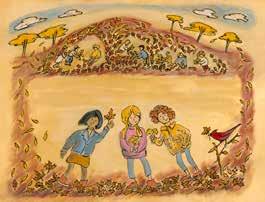
Kathleen Rooney is a founding editor of Rose Metal Press, a nonprofit publisher of literary work in hybrid genres, and a founding member of Poems While You Wait. She is author of five novels, including Lillian Boxfish Takes a Walk and Cher Ami and Major Whittlesey, as well as the poetry collection Where Are the Snows She lives in Chicago and teaches at DePaul University.
Beth Rooney is a visual journalist based in Oak Park, Illinois. A writer and photographer, she is drawn to stories that explore our place in the world and show how individual circumstances reflect larger truths.
Betsy Bowen is author and illustrator of many children’s books, including Plant a Pocket of Prairie and The Lost Forest, both published by the University of Minnesota Press. She lives in Grand Marais, Minnesota.
CHILDREN’S PICTURE BOOK, 3–8 YEARS
$17.95 Cloth/jacket ISBN: 978-1-5179-1737-1 OCTOBER
32 pages 32 color plates 10 1/2 x 8
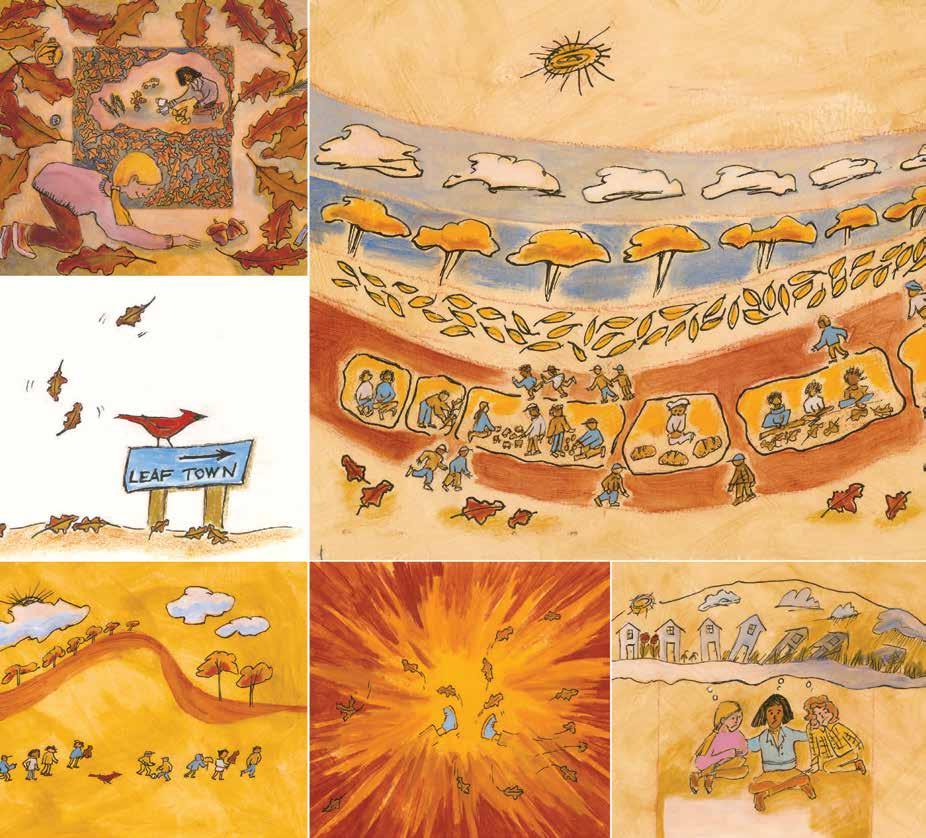

KAO KALIA YANG
A Hmong girl tells the story of her beloved aunt and uncle’s first home in America— long gone, but still alive in the family’s memories
The Blue House I Loved centers on a family of newly arrived Hmong refugees who move into the lower level of a duplex in St. Paul, Minnesota. The narrator loves her aunt and uncle’s home with its mismatched furniture, but it is too small for the large family. The boy cousins sleep in the three-season porch, where their wet hair freezes in wintertime, and the rest of the family crowds into two bedrooms. Yet this is the cherished home where they live and love, their own small corner of a very large and unfamiliar place, and in this blue house a young girl learns about her new country. Eventually, the family moves in search of more space, and years later the
house is torn down. Where it was, green grass now grows. But for this girl and her family, the ghost of the house remains, its memories a strong thread that holds time at bay and hearts close together.
Combining Kao Kalia Yang’s lyrical prose with ethereal illustrations by artist and architect Jen Shin, The Blue House I Loved speaks to the multitude of refugee experiences around the world, honoring the challenges they face and the homes they create together.

Kao Kalia Yang is a multigenre author of books for adults and children. Her children’s books include From the Tops of the Trees, winner of the 2023 APALA Award, and Yang Warriors, also published by the University of Minnesota Press. She is a Guggenheim Fellow; holds an honorary doctorate from Carleton College; and has received several Minnesota Book Awards. She lives in Minnesota, and she speaks and teaches across the nation.
Jen Shin is an interdisciplinary artist, urbanist, architect, and environmental advocate. The daughter of immigrants and granddaughter of refugees, she is fascinated by what it means to make a home and by the places where communities create home together. She lives and works in Brooklyn.
CHILDREN’S PICTURE BOOK, 5–10 YEARS
$17.95 Cloth/jacket ISBN: 978-1-5179-0797-6
$17.95 Retail e-book ISBN: 978-1-4529-7510-8
JANUARY 2026
36 pages 36 color plates 9 x 10
DANIEL HEATH JUSTICE
The twentieth-anniversary edition of the path-clearing study of Cherokee writing in English, with an emphatic refocus on voices from the three Cherokee tribal nations
This Citizenship and Sovereignty Edition of Our Fire Survives the Storm is a thoroughly updated, nationhood-focused, twentiethanniversary revision of Daniel Heath Justice’s influential study of Cherokee writing in English. Through politically astute and historically grounded readings of diverse texts by citizens of the Cherokee Nation, United Keetoowah Band of Cherokee Indians, and Eastern Band of Cherokee Indians, Justice connects Cherokee literature to Indigenous sovereignty, nationhood, and collective futurity.
Guided by a reparative vision that directly contends with the outdated literary legacies of the book’s first edition, this revision confronts the ongoing harms of unsubstantiated and false Cherokee heritage claims on literary studies, replacing readings of primary texts by unverified claimants with those of Cherokee citizen writers. As Justice addresses issues of accountability, he engages with the past
two decades of Indigenous scholarship, fully updating terminology, concepts, and scholarly resources. He expands and deepens the intellectual and historical context for Cherokee literary production introduced in the first edition, and he discusses Cherokee writing and community in the mid-twentieth century, the Cherokee Freedmen’s long struggle for justice, and the future of Cherokee nationhood.
Highlighting the work of authors who illustrate the transformative collective discourses of what it means to be Cherokee, Justice examines the richness of Cherokee literary expression through motifs of roots, removal, and nationhood in traditional stories, speeches, legal and governance documents, memoirs, short stories, novels, and plays. An invitation to reflective criticism, this new edition of Our Fire Survives the Storm is grounded in the belief that Indigenous nationhood is a necessary ethical response to the violence of the settler imaginary.












Daniel Heath Justice is a Colorado-born citizen of the Cherokee Nation and professor in the Institute for Critical Indigenous Studies and the Department of English Languages and Literatures at the University of British Columbia. He is author of Why Indigenous Literatures Matter and coeditor of Allotment Stories: Indigenous Land Relations under Settler Siege (Minnesota, 2022).
NATIVE AMERICAN STUDIES/LITERARY CRITICISM
$25.95 Paper ISBN: 978-1-5179-2075-3
$25.95 Retail e-book ISBN: 978-1-4529-7475-0 DECEMBER
384 pages 2 b&w illustrations 3 maps 5 1/2 x 8 1/2 Indigenous Americas Series
Retail e-book files for this title are screen-reader friendly with images accompanied by short alt text and/or extended descriptions.
Twenty-five years of creative expression from Puerto Rican artists working in Puerto Rico and across its U.S. diaspora
“Most of all, I celebrate the complexity and nuance this exhibition offers . . . making it clear that Puerto Rican artistic production across the archipelago and the diaspora is intricate, dynamic, and multifaceted, representing a cultural vaivén of expression and creativity.”
—Arlene Dávila, from the Foreword
Connoting back and forth movement, the word vaivén is frequently used to describe the supposed ease with which Puerto Ricans travel between the United States and Puerto Rico. Not just physical but also psychological, this diasporic oscillation is inextricably linked to Puerto Rican heritage, and the fluidity between the two geographies is constant, complex, and profound.
A collaboration between the Katherine E. Nash Gallery at the University of Minnesota and Hidrante, San Juan, Vaivén showcases the work of forty-three intergenerational artists working from Puerto Rico and its U.S. diaspora. Highlighting their many artistic genres and styles, this bilingual volume uplifts the cultural and political dynamism and shifting
interpretations of home and belonging that are inherent to Puerto Rico amid the perpetual transnational migrations of its people.
Artists: Candida Alvarez, Genesis Báez, Sula Bermudez-Silverman, Ricardo Cabret, Melissa Calderón, Rodríguez Calero, Colectivo Moriviví, Nayda Collazo-Llorens, Gisela Colón, Cristina Córdova, David Antonio Cruz, Maritza Dávila, Larissa De Jesús Negrón, Ada del Pilar Ortiz, Estrella Esquilín, Mónica Félix, Cándida González, GeoVanna Gonzalez, Ivelisse Jiménez, Juanita Lanzó, Natalia LassalleMorillo, Olivia Levins Holden, Ricardo Levins Morales, Nora Maité Nieves, Héctor Méndez Caratini, Javier Orfón, Josué Pellot, Joey Quiñones, Wanda Raimundi Ortiz, Elizabeth Robles, Amber Robles-Gordon, Jezabeth Roca Gonzalez, Shellyne Rodriguez, Luis Rodríguez Rosario, Raúl Romero, G. Rosa-Rey, Juan Sánchez, Beatriz Santiago Muñoz, Amarise Deán Santo, Edra Soto, Bibiana Suárez, Nitza Tufiño, William Villalongo.
Contributors: Yomaira C. Figueroa-Vásquez, María Elena Ortiz, Carlos Ortiz Burgos, Monica Uszerowicz.

Teréz Iacovino is assistant curator of the Katherine E. Nash Gallery.
José López Serra is an independent curator and director of Hidrante, San Juan, a Puerto Rico–based gallery and residency program.
Arlene Dávila is professor of anthropology and American studies at New York University and author of Latinx Art: Artists, Markets, and Politics
ART/LATIN AMERICAN STUDIES
$34.95 Paper ISBN: 978-1-517919-76-4
SEPTEMBER
272 pages 84 color plates 9 x 11 3/4
Distributed for the Katherine E. Nash Gallery, University of Minnesota
KJ CERANKOWSKI
Asexuality and the Matter of Absence
Advancing asexuality studies in new, queer directions—beyond identity and beyond the human
“Beautifully written, politically imaginative, and intellectually nuanced, Nothing Wanting uncovers an entirely new horizon for asexual scholarship and trans studies. KJ Cerankowski remixes the groundwork for asexuality studies, unfolding worlds we might not notice because they’re quiet, barely perceptible, transitory, rotting into other forms.”
—Nathan Snaza, author of Tendings: Feminist Esoterisms and the Abolition of Man
We’ve all seen the page that states “this page intentionally left blank” or heard an authority figure declare “nothing to see here, folks,” and yet the so-called blank page has writing on it, and folks definitely have something to see. From the entry point of these and other paradoxical declarations of absence, KJ Cerankowski applies the aesthetics of asexuality to theorize silences, nothings, and emptiness. In the process, he explores new ways of making meaning out of the supposedly meaningless.
Throughout this investigation into absences, Cerankowski moves intuitively and idiosyncratically, taking readers along a series of waypoints that include Border, the acclaimed horror film about a customs officer who can smell fear; Jenny Hval’s discomfiting novel Paradise Rot; and disabled artist Finnegan Shannon’s iconic benches. Experimental in form as well as content, Nothing Wanting offers an innovative and mischievous reading experience that plays with structural elements like redaction, erasure, supertext, and repetition. With a deeply anticapitalist, anticolonial motivating ideology, it pushes to the limits of language, subverting commonplace notions of books, knowledge, and what it is to be human.
Moving beyond identity and representation, Nothing Wanting is playful, fascinating, and provocative as it conceives asexuality as additive and expansive rather than lacking. As it reveals the vibrant lifeworlds that hum in silences and thrum in stillnesses, Nothing Wanting pivots from the imposition of wanting nothing to the craving of nothing wanting: satisfied, yet always yearning for more worlds of thriving—for everything and everyone.

KJ Cerankowski is author of Suture: Trauma and Trans Becoming and coeditor of two editions of Asexualities: Feminist and Queer Perspectives. He is associate professor of comparative American studies and gender, sexuality, and feminist studies at Oberlin College.
GENDER AND SEXUALITY STUDIES
$21.95 Paper ISBN: 978-1-5179-1643-5
$88.00xx Cloth ISBN: 978-1-5179-1642-8
NOVEMBER
216 pages 5 b&w illustrations 5 1/2 x 8 1/2
JEFFREY ANDREW WEINSTOCK, EDITOR
A comprehensive guide to the timeless, paradoxical appeal of horror
Why do we enjoy horror? The emotional responses the genre provokes—fear, dread, and disgust—are ones we typically seek to avoid, so what is the appeal of narratives and artistic representations that seek to scare, startle, shock, and repulse? In The Horror Theory Reader, Jeffrey Andrew Weinstock assembles theorizations of the genre’s appeal from antiquity to the present day to explore the “paradox of horror” that has for millennia preoccupied theorists and consumers alike.
Beginning with an introduction situating the history of horror in the context of moral panics, this carefully curated volume then is organized into three sections that introduce early attempts to explain horror’s fascination; present perspectives from horror writers, filmmakers, and scholars; and offer nuanced considerations of horror’s intersections with disability, queerness, race, and gender. Featuring classic commentaries on the genre by H. P. Lovecraft, Alfred Hitchcock, and Stephen King alongside incisive essays by philosophers, literary and film scholars, cultural critics, and others, The Horror Theory Reader is indispensable for scholars and
will be of interest to anyone curious about our paradoxical enjoyment of appalling and fearsome things.
Contributions by: Joseph Addison; Aristotle; Anna Letitia Barbauld; Dani Bethea; Edmund Burke; Noël Carroll, CUNY Graduate Center; Brigid Cherry; Mathias Clasen, Aarhus U; Douglas E. Cowan, Renison U College; Meghan Downes, Monash U; Berys Gaut, U of St. Andrews; Julian Hanich, U of Groningen; Sheri-Marie Harrison, U of Missouri; Matt Hills, U of Huddersfield; Alfred Hitchcock; David Hume; Mark Jancovich, U of East Anglia; Stephen King; Petra Kuppers, U of Michigan; H. P. Lovecraft; G. Neil Martin, Regent’s U London; John Morreall, College of William and Mary; Monika Negra; Nina Nesseth; Anne Radcliffe; Fredrich Schiller; Walter Scott; Tim Snelson, U of East Anglia; Christopher St. John Sprigg; Susan Stryker, U of Arizona; S. Trimble, U of Toronto; Kendall Walton, U of Michigan; Linda Williams, UC Berkeley; Robin Wood.
















Jeffrey Andrew Weinstock Editor

Jeffrey Andrew Weinstock is founder and president of the Society for the Study of the American Gothic and professor of English at Central Michigan University. He is author or editor of many books, including The Monster Theory Reader and The Age of Lovecraft, both from Minnesota.
LITERARY CRITICISM/POPULAR CULTURE
$34.95 Paper ISBN: 978-1-5179-1782-1
$140.00xx Cloth ISBN: 978-1-5179-1781-4
$34.95 Retail e-book ISBN: 978-1-4529-7477-4
JANUARY 2026
528 pages 19 b&w illustrations 2 tables 7 x 10
Retail e-book files for this title are screen-reader friendly with images accompanied by short alt text and/or extended descriptions.
TRANSLATED BY GINA M. STAMM
A beguiling, perspective-shifting story of obsession and loss set in the grimy, latecolonial decadence of Macau at the end of the twentieth century
“By turns searing, hair-raising, and tender, The Inner Harbour delineates a lurid dystopia verging on reality and the souls inhabiting the horrors it harbors.”
—Jeffrey Zuckerman, translator of Antoine Volodine’s Radiant Terminus
“Theatrical, scenic, almost gestural, its sentences sometimes stop at the impossibility of a conclusion. . . . The Inner Harbour is where literature itself takes place.” —Libération
In The Inner Harbour, Antoine Volodine focuses his literary investigations away from dystopian futures to a specific place at a particular historical moment: Macau on the eve of the Portuguese colony’s transfer to China. In a seedy flat in one of the city’s slums, a hired assassin named Kotter interrogates Breughel, a writer on the run from a mysterious organization code-named Paradise. Breughel has been hiding out in Macau with his lover, Gloria Vancouver, and a significant sum of the organization’s money.
But Gloria is dead and the money spent—or so Breughel claims—and now he lives alone in humid squalor.
With increasing severity, Kotter extracts Breughel’s confessions, but are they truth or subterfuge? Or are the confessions an elaborate work of fiction by a writer aware that they are no longer able to differentiate between memory and fantasy? Volodine brilliantly blurs the levels of narration— between what Breughel tells his interrogator, what he remembers or invents, and the stories he has written, including his accounts of Gloria’s hallucinatory visions.
Interweaving threads of fiction and truth, lies and hallucinations, The Inner Harbour evokes many of the themes found in Volodine’s other “post-exotic” works: the slippage between dreams and reality, the nightmares of history, the exhaustion of literature and politics, and questions about what it means to be faithful to people or ideas long since vanished. But Volodine also uses the setting of Macau’s latecolonial decadence to explore new sensations of foreignness, alienation, and resignation, all of which coalesce into a nesting doll of narrative that houses an unconventional and tragic love story.




Antoine Volodine is the primary pseudonym of a French-Russian writer who has published twenty books under this name, of which several are available in English translation: Minor Angels, Radiant Terminus, Bardo or Not Bardo, Writers, Solo Viola (Minnesota, 2021), and Mevlido’s Dreams (Minnesota, 2024). He has won many literary awards, including the 2014 Medici Prize for Radiant Terminus
Gina M. Stamm is associate professor of French at The University of Alabama and translator of Mevlido’s Dreams
FICTION
$17.95 Paper ISBN: 978-1-5179-1969-6
$17.95 Retail e-book ISBN: 978-1-4529-7404-0
OCTOBER
160 pages 5 3/8 x 8
A Univocal Book
Retail e-book files for this title are screen-reader friendly.



A whimsical journey into the realm of offduty literary characters—and an ode to the power of reading
At twenty-four, Marina is at a crux in life. “I’m just at the age when time speeds up in an odd way. . . . The winters come closer together and you begin to accept that you’re not special anymore.” She’s cautious of her imaginative tendencies, unsure how she might make a difference in a world that feels increasingly big and small at the same time. At this uncertain precipice, nothing could come as a stranger surprise than waking up one sunny morning on a park bench in an entirely different world. Yet that’s where Marina finds herself: at a place called In The Beginning, populated by characters from literature waiting to be read— or, in some cases, written.
Although Marina is bewildered by her sudden and unexpected arrival in this bustling realm of overlapping possibilities, she soon learns that In The Beginning is facing an existential threat,
and she is uniquely positioned to help. So begins her quest to find Pearl, the one person who may hold the key to saving everyone. Delving deeper into this unusual world in pursuit of answers, Marina’s journey leads her into the heart of herself and to a shocking truth.
Ann Druyan packs this compelling adventure story with characters both familiar and new, offering a profound testament to the cosmic powers of imagination and curiosity. First published in 1977, A Famous Broken Heart resounds with wit and wisdom that continue to connect with readers.

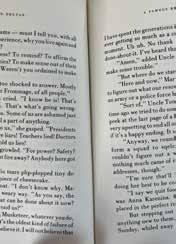
Ann Druyan is a writer, producer, and director whose credits include co-creating the motion picture Contact and the documentary series Cosmos (the PBS original as well as the 2014 and 2020 seasons on Fox), for which she was awarded the Emmy and Peabody Awards. She and her late husband, Carl Sagan, wrote the New York Times bestselling books Comet, Shadows of Forgotten Ancestors, and The Demon-Haunted World. She was the creative director of NASA’s Voyager Interstellar Message Project and has lectured at Harvard University, Cambridge University, CalTech, the National Cathedral, and many other institutions around the world.
FICTION
$16.95 Paper ISBN: 978-1-5179-2082-1
$16.95 Retail e-book ISBN: 978-1-4529-7496-5
DECEMBER
128 pages 5 1/2 x 8 1/2
MEREDITH WILLSON
FOREWORD BY MARK CABANISS
Back in print: the playful and personal memoir of Meredith Willson’s creative tribulations and triumphs before The Music Man
“Eggs I Have Laid is a page-turner memoir brimming with Iowa-to-Hollywood-and-back stories, which are as solid gold as the cornet Meredith Willson would later dream up for a lisping boy he named Winthrop in his magnum opus musical comedy The Music Man.” —Mark Cabaniss, from the Foreword
Composer, musical director, writer, lecturer, and piccoloist Meredith Willson laid many eggs throughout his career—but not all those eggs would hatch quite so gloriously as his Broadway hit The Music Man. In Eggs I Have Laid, Willson genially chronicles the failures that he faced as he made his place in show business during the pivotal early 1950s, when radio was being overtaken by television.
From Hollywood to New York, London, and Paris, and back to his hometown of Mason City, Iowa, Willson sets each scene vividly, bringing to life his encounters with zeitgeist stars, from collaborators Tallulah Bankhead
and Fred Allen to Orson Welles and Carmen Miranda. His signature wit excels as he relates his tales of eggs dropped, notable among them the lavishly produced variety program The Big Show, his ill-fated attempt to be a radio bulwark against the encroaching tide of television.
First published in 1955, Eggs I Have Laid features delightful curiosities, like an eightpage “platonic dialogue” about quitting smoking and the lyrics to a love song with the occupancy limits of the New York Fire Code as its central metaphor. It is at once a vivid chronicle and a trove of insight from the hilarious, perseverant mind of Meredith Willson.

BY MARK CABANISS
Meredith Willson (1902–1984) was a popular composer, songwriter, and musician best known for Meredith Willson’s The Music Man and for composing the music for The Unsinkable Molly Brown. He is author of And There I Stood with My Piccolo and “But He Doesn’t Know the Territory”: The Story Behind “Meredith Willson’s The Music Man,” both published by the University of Minnesota Press.
Mark Cabaniss is a music publisher, broadcaster, producer, speaker, ASCAP award–winning composer, and the national bestselling author of Miracle of The Music Man: The Classic American Story of Meredith Willson
MEMOIR/MUSIC
$17.95 Paper ISBN: 978-1-5179-2062-3
$17.95 Retail e-book ISBN: 978-1-4529-7492-7
OCTOBER
192 pages 5 1/4 x 8
NORWEGIAN

PETER CHRISTEN ASBJØRNSEN AND JØRGEN MOE
TRANSLATED BY TIINA NUNNALLY
The definitive English translation of the celebrated story collection regarded as a landmark of Norwegian literature and culture—now in paperback
“Norway’s wonderfully weird traditional tales are as much a delight to the ear as they are to the imagination.”
—Wall Street Journal
“The retellings are lively and clearly work to retain the flavor of the originals. A valuable collection for scholars and readers alike.”
—The Horn Book
These stories, set in Norway’s majestic landscape of towering mountains and dense forests, are filled with humor, mischief, and sometimes surprisingly cruel twists of fate. All are rendered in the deceptively simple narrative style perfected by Asbjørnsen and Moe— translated into an English that is as finely tuned to the modern ear as it is true to the original Norwegian.
Peter Christen Asbjørnsen (1812–1885) and Jørgen Moe (1813–1882) were energetic writers and researchers best known for their monumental collection Norske folkeeventyr (Norwegian Folktales). Tiina Nunnally is an award-winning translator of Norwegian, Danish, and Swedish literature. Her translations published by the University of Minnesota Press include Sigrid Undset’s Olav Audunssøn tetralogy and Marta Oulie as well as works by Vidar Sundstøl, Ola Larsmo, and Hans Christian Andersen.
FOLKLORE
$29.95 Paper ISBN: 978-1-5179-2104-0
$29.95 Retail e-book ISBN: 978-1-4529-6455-3
AUGUST
344 pages 2 b&w illustrations 6 x 8 1/4

LINDA L E GARDE GROVER
A fifty-year-old mystery converges with a present-day struggle over family, land, and history—now available in paperback
“Grover writes with intentionality and grace as she examines ancestry, autonomy, and survivance.”
—Ms. Magazine
“In this intimate and suspenseful novel, Grover explores the complex evolving relationship between a place and the people who inhabit it.”
—Electric Literature
Linda LeGarde Grover weaves a compelling and complex novel of Mozhay Point and its people with A Song over Miskwaa Rapids. Margie Robineau, fighting for her family’s long-held allotment land, uncovers events connected to a long-ago escape plan, and the burial—at once figurative and painfully real—of not one crime but two. While Margie pieces the facts together, Dale Ann is confronted by her own tightly held secrets and the truth that the long ago and the now are all indelibly linked, no matter how much we try to forget.
Linda LeGarde Grover is author of many books, including the novels The Road Back to Sweetgrass and In the Night of Memory; the poetry collection The Sky Watched; and the nonfiction books Onigamiising and Gichigami Hearts, all published by the University of Minnesota Press. She is professor emerita of American Indian studies at the University of Minnesota Duluth and a member of the Bois Forte Band of Ojibwe.
FICTION/NATIVE AMERICAN
$16.95 Paper ISBN: 978-1-5179-1482-0
$16.95 Retail e-book ISBN: 978-1-4529-6846-9
OCTOBER
160 pages 5 1/2 x 8 1/4
JANIS A. FAIRBANKS
A memoir of lessons learned from an Ojibwe grandmother during the time of Relocation
“Janis A. Fairbanks shows us how connection, culture, and community are more than dreams—they live inside of us wherever we go. Her journey from and back to her grandmother’s Ojibwe teachings in Sugar Bush Babies speaks to us all.”
—Anton Treuer, author of Where Wolves Don’t Die
“In her exquisitely lucid and tender memoir, Janis A. Fairbanks links her grandmother’s life to her own and the ‘little grandmothers’ to come, sharing histories, memories, and what she has learned. The story is a treasured gift from an Elder and the Elders before her, a sweetness of knowledge shared in traditional Ojibwe fashion.”
—Linda
LeGarde Grover, author of Gichigami Hearts
Why, her mother asked, did Janis keep running away from kindergarten? She wanted to go home. But not to the house they had just moved to in Duluth, with its gravel yard and traffic noise. She was a country girl, and home was the log cabin among the wildflowers on the Leech Lake Indian Reservation in Bena, Minnesota. Knowing they were now going to stay in the city, Janis’s parents offered her a compromise: during the summer, Janis
could leave the bustle of Duluth and live with her grandmother on the Fond du Lac Reservation, listening to stories, learning Ojibwe, and finding her place in the world. In Sugar Bush Babies, Janis A. Fairbanks returns to that time of Relocation, dislocation, and discovery, taking us home with her through stories of childhood and lessons learned at her grandmother’s knee, enveloped in love and tradition.
Recalling her early childhood at Leech Lake, her school days in Duluth, and her summers in Fond du Lac, Janis brings the gifts of living history full circle, continuing the traditions of carrying family lore, women’s wisdom, and Indigenous culture from generation to generation.
There are tales told at nighttime or during thunderstorms; lessons in Native medicine; stories of Grandma’s recollections of boarding school, Daddy’s days as a lumberjack, and Mother’s special powers; memories of wash days and dancing, of powwows and Girl Scout camp, of snaring rabbits, selling lilacs, and attending the circus. A lyrical memoir, Sugar Bush Babies conveys the eloquence of women speaking and sharing through generations and the lasting power of tradition.



Janis A. Fairbanks is a member of the Fond du Lac Band of Lake Superior Chippewa. She is involved in preserving and revitalizing the Ojibwe language and was the first coordinator of the Anishinaabemowin Ojibwe Language Program for Fond Du Lac Reservation. She is on the Editorial Advisory Board for Thunderbird Press (Animikii Mazina’iganan) and mentors a writer’s group.
$17.95 Cloth/jacket ISBN: 978-1-5179-1902-3
$17.95 Retail e-book ISBN: 978-1-4529-7354-8
SEPTEMBER
152 pages 27 b&w illustrations 5 1/2 x 8 1/4
The biography of one of Minnesota’s most beloved nature writers, from her career in the city to her rustic cabin on Gunflint Lake
“David Hakensen’s engaging, well-researched biography of American nature writer Helen Hoover is a compelling portrait of an uncompromising artist. It is an excellent companion to her works and will surely assist a longoverdue Helen Hoover revival.”
—Ann McCutchan, author of The Life She Wished to Live: A Biography of Marjorie Kinnan Rawlings, Author of The Yearling
“Her Place in the Woods adds so much to the story of Helen Hoover’s life and work. The emotional personal details fill in the circumstances of Helen’s daily life and build a larger character than her own lyrical writings allow us to feel.”
—Betsy Bowen, artist and illustrator, Grand Marais, MN
During the late 1950s through the early 1970s, Helen Hoover’s stories and essays of life in the wilderness on northern Minnesota’s Gunflint Lake found millions of fans and earned her accolades alongside nature writers like Sigurd Olson, Rachel Carson, Sally Carrighar, and Calvin Rutstrum. This first complete biography illuminates how Helen Hoover (1910–1984) made a place for herself and for countless readers in, as she put it, the world of her time.
Helen and her husband, Adrian, had long dreamed of moving to a remote cabin in the woods. As they started the long return drive to Chicago after a summer spent on Gunflint Lake, they finally made the leap, quitting their jobs with a long-distance phone call from Grand Marais and figuring out the rest as they went. The Hoovers were woefully unprepared for life off the grid and slowly learned how to convert sheds into chicken coops and fend off bears. Social encounters presented their own challenges, with Helen’s fiery personality leading to clashes with hunters and other Gunflint neighbors. Gradually, the Hoovers settled into the rhythms of their remote homestead, and Helen would craft a prolific literary livelihood from her keen observations of nature and encounters with animals in the surrounding woods.
Her Place in the Woods captures both an awakening to the power and fragility of the natural world and the efforts and talents of an extraordinary woman defining herself as a writer. Though Helen Hoover would move on from the secluded North Woods, as she wrote in her final book, The Years of the Forest, “From this time on it would be both here and with me wherever I might be, as long as I should live.”

David Hakensen is an award-winning public relations executive with more than forty years of experience. He has served on several nonprofit boards and was board president of the Minnesota Historical Society.
BIOGRAPHY/NATURAL HISTORY
$24.95 Cloth/jacket ISBN: 978-1-5179-1168-3
$24.95 Retail e-book ISBN: 978-1-4529-7443-9
SEPTEMBER
264 pages 2 b&w illustrations 38 b&w plates 6 x 9
ROBERT M. FRAME III
A richly illustrated history of the flour factories that transformed the milling industry worldwide—and forever changed the culture and architecture of Minneapolis
“Eye-opening and superbly researched, Making Mill City traces the founding, development, and ultimate demise of what was the greatest flour milling complex in the world. Robert M. Frame III’s significant work of scholarship will be the standard history of the Minneapolis milling industry for years to come.”
—Larry Millett,
author of Lost Twin Cities
Among the most consequential advances of the Industrial Revolution was the invention of the modern roller mill, which sent the traditional millstone into obsolescence and fundamentally changed the production of a key ingredient to feeding the world. The culture and landscape of its hometown, Minneapolis, Minnesota, was altered as well, and Making Mill City tells the story of how revolutionary technologies originating at St. Anthony Falls on the Mississippi River put Minneapolis on the map and cemented its world status as “Mill City.”
With deep historical detail and abundant illustrations, Robert M. Frame III charts the dramatic transformation of Minneapolis milling—and urban life—between the early 1870s and 1920s. Two machines propelled this change: the middlings purifier and the modern roller mill. Enabling millers to grind hard Upper Midwestern spring wheat, these innovations gave rise to the “mammoth mills” and ever-expanding flour factories that would soon dominate the Minneapolis riverfront. Prominent entrepreneurs like those who gave their names to the Washburn and Pillsbury A Mills were significant, but Frame foregrounds the crucial roles of the millers, millwrights, and engineers who designed and equipped the massive new factories, as well as the editor of the weekly trade publication Northwestern Miller, to paint a picture of the culture that grew around this industrial phenomenon.
A rich narrative describing how Minneapolis became the largest producer and exporter of wheat flour for more than fifty years, Making Mill City captures a critical chapter in the history of the city. Art and architecture inspired by mills and millers stand today as National Historic Landmarks, and the development and success of the current thriving metropolis have strong foundations in its milling history.


engineering firm
Since the 1980s, he has had a professional consulting practice in historical research and historic preservation, with special expertise in industrial and engineering structures.
HISTORY
$39.95 Cloth/jacket ISBN: 978-0-8166-6760-4
$39.95 Retail e-book ISBN: 978-1-4529-7431-6
FEBRUARY 2026
376 pages 244 b&w illustrations 32 color plates
8 1/2 x 10 1/2
LARRY MILLETT
Three novellas of murder and mystery in nineteenth-century Minneapolis
“A master of Minneapolis character, Larry Millett presents three fun, fast tales of lively historical crime fiction. It's all here: murder, mystery, corruption, chicanery, the river, the mills, the city, and the social strata in one excellent volume.”
—Carl Brookins, author of Sins of Edom
OWNER DIES UNDER STRANGE CIRCUMSTANCES AT MINNEAPOLIS MILL
HOTEL BELLMAN FOUND DEAD IN OSCAR WILDE’S ROOM
$10,000 REWARD FOR DISCOVERING MY MURDERER
These headlines are just the beginning as Larry Millett returns to the scene of the crime in three tales of intrigue and murder in historic Minneapolis. The mind that brought us the intrepid Shadwell Rafferty now introduces three unlikely but talented new detectives— in-laws Sophia Westerly and Annie Nichols, and the incomparable Oscar Wilde—who are
thrown into murder investigations amid flour milling, literary culture, and labor organizing in the burgeoning city.
Murder at the Falls takes us to the Perfection Flour Mill at St. Anthony Falls when one owner turns up dead under grotesque circumstances and suspicion lands on the other, plunging the city into a frenzy of dark speculation. In A Wilde Night at the Nicollet House, Oscar Wilde, in the midst of his 1882 North American tour and spouting witticisms as only he can, teams up with the long-time house detective at the Nicollet House Hotel to search for the murderer of the hotel bell captain found dead in his room. In The Death Committee, a champion lawyer of the working class, convinced his own murder is imminent, arranges for three citizens to investigate his death, with a $10,000 reward going to the one who finds the killer.
Shining light on the colorful characters and curious corners of Twin Cities history, Mysterious Tales of Old Minneapolis brings the nineteenth-century city to vibrant life (and dastardly death) in the spellbinding style that Larry Millett’s legion of loyal readers has come to love.

Larry Millett is author of ten mysteries that feature Sherlock Holmes and St. Paul detective Shadwell Rafferty, including the collection Mysterious Tales of Old St. Paul, and his nonfiction works include Once There Were Castles and Minnesota Modern, winner of a Minnesota Book Award—all from the University of Minnesota Press.
$24.95 Cloth/jacket ISBN: 978-1-5179-2047-0
$24.95 Retail e-book ISBN: 978-1-4529-7439-2 NOVEMBER
296 pages 6 x 9
JESSICA LOPEZ LYMAN
An in-depth look at how Latina/x artists transform art into activism and reclaim space in the Twin Cities
“A refreshing perspective on the intersection of art, activism, and community dynamics, Place-Keepers focuses on Indigenous and Black Latinx artists while also emphasizing the rich heterogeneity within these communities. Jessica Lopez Lyman celebrates the ingenuity of these artists while providing a much-needed exploration of the vibrant art scene in Minnesota.”
—Arlene Dávila, author of Latinx Art: Artists, Markets, and Politics
“Masterfully written and convincingly argued, PlaceKeepers focuses on creative communities of co-resistance to examine how Latina and gender noncomforming artists navigate the settler colonial landscape. With close attention to Latinx, Indigenous, and BIPOC communities in Minnesota, Jessica Lopez Lyman paints a vivid picture of activism taking many forms, including through cultural production and artistic creation.”
—María Eugenia Cotera, coeditor of Chicana Movidas: New Narratives of Activism and Feminism in the Movement Era
In Place-Keepers, Jessica Lopez Lyman examines how Latina/x artists in the Twin Cities navigate and challenge the region’s deep-seated racial injustices. Using “InterLatina movidas”—subtle yet strategic
actions through which Latina/x artists forge solidarities, mobilize for justice, and reclaim space—these artists respond to systemic oppression through public performances and behind-the-scenes negotiations with the state, nonprofits, and other institutions.
Centering Latina/x women and gender nonconforming artists from Chicana/Mexicana, U.S. Central American, and Caribbean backgrounds, Place-Keepers confronts reductionist theories of Latinidad that flatten ethnic and racial identities. It demonstrates how the creative and activist practices of these cultural organizers address urgent social struggles from resisting gentrification and environmental destruction to opposing police violence. Lopez Lyman situates these efforts within the broader history of racial justice organizing in Minnesota, tracing a lineage of resistance that long precedes the 2020 Minneapolis uprising following the murder of George Floyd.
Expanding the foundational concept of “movidas” in Chicana/o/x and Latina/o/x studies by highlighting maneuvers of infiltration, improvisation, individual ritual, and interdependence, Place-Keepers establishes a crucial framework for understanding art as activism.
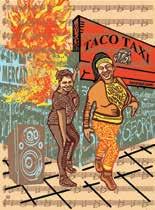
of Minnesota.
LATINO STUDIES/ART
$24.95 Paper ISBN: 978-1-5179-2003-6
$100.00xx Cloth ISBN: 978-1-5179-2002-9
$24.95 Retail e-book ISBN: 978-1-4529-7451-4
NOVEMBER
248 pages 38 b&w illustrations 14 color plates 5 1/2 x 8 1/2
A young girl reckons with the demolition of a Black Saint Paul neighborhood to make way for the Interstate in the early 1960s
“The House on Rondo brings Minnesota history to life, revealing long-hidden truths about our collective past. Debra J Stone’s book is a love letter to Rondo, an ode to the strength and vitality of Black communities, and a gift to Minnesotans and to readers everywhere who are willing to look their own messy history in the eye—and learn from it in order to fight for a better world.”
—Molly Beth Griffin, award-winning author of Silhouette of a Sparrow
When thirteen-year-old Zenobia has to leave her friends and spend the summer at Grandma’s while Mama recovers from a stroke, life seems so unfair. But then the eviction letters start arriving throughout her grandparents’ neighborhood, and white men chalk arrows to mark the gas and water lines, and a new world of unfairness unfolds before her. It’s 1963, and Zenobia’s grandparents’ house on Rondo Avenue in Saint Paul—like all the homes in this thriving Black community— is targeted for demolition to make way for the new Interstate Highway 94.
As Zenobia gradually learns about what’s planned for the Rondo neighborhood and what this means for everyone who lives there, she discovers how her story is intertwined with the history of her family, all the way back to Great Grandma Zenobia and the secrets Grandma Essie held close about the reason for her light skin. With the destruction of the neighborhood looming, Zenobia takes a stand on behalf of her community, joining her no-nonsense neighbor, onetime cowgirl Mrs. Ruby Pearl, in a protest and ultimately getting arrested. Though Zenobia is grounded for a month, her punishment seems of little consequence in comparison to what is happening all around her. Even though the demolition continues, she is proud to discover the power and connection in protesting injustice.
The House on Rondo captures the heartbreak, resistance, and resilience that marks a community sacrificed in the name of progress—a “progress” that never seems to favor Black families and neighborhoods and that haunts cities like Saint Paul to this day. As Zenobia learns what can be destroyed and what cannot, her story teaches us that joy, community, and love persist, even amid violence and loss.
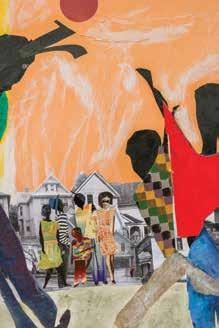
Debra J Stone writes essays, poetry, and fiction. She received a 2023–25 Jerome Hill Artist Fellowship in Literature and the 2023 Loft Mirrors and Windows Fellowship for writing books for BIPOC children and young adults. She lives in Minneapolis with her husband and her Australian cattle dog, Ruby. Find her online at debrajeannestone.com or on Instagram @debra2036.
$17.95 Cloth/jacket ISBN: 978-1-5179-1930-6
$17.95 Retail e-book ISBN: 978-1-4529-7417-0 OCTOBER
104 pages 9 b&w illustrations 5 1/2 x 8 1/2
CARROL L. HENDERSON
FOREWORD BY MARSHALL JOHNSON
An expansive account of how Minnesota became the epicenter of nongame wildlife conservation
Minnesota became a national leader for a new era of conservation in 1977 when the state’s Department of Natural Resources hired Carrol L. Henderson as the supervisor of the Nongame Wildlife Program. Explaining how the statewide goal to preserve biological diversity became reality, A National Legacy provides insights and inspiration as it describes how Henderson developed one of the first nongame wildlife conservation programs in the nation.
The fledgling program began to prioritize the management and restoration of nonhunted wildlife, from butterflies, frogs, snakes, and bats to bald eagles, trumpeter swans, and peregrine falcons. Bringing passion, creativity, and ingenuity to his task, Henderson looked beyond simple species-focused conservation and created a model that involved the public. With an emphasis on habitat, high-profile
species, and hands-on experiences, along with a holistic approach, his model brought wildlife advocacy into daily life as Minnesotans learned the benefits of the now-ubiquitous practices of pollinator gardening and bird feeding.
Offering a historic review of the creation, development, and accomplishments of Minnesota’s Nongame Wildlife Program, A National Legacy demonstrates how this commitment to preserving Minnesota’s wildlife has benefited every resident of the state—whether they walk, fly, swim, or slither.

Carrol L. Henderson is an internationally renowned leader in wildlife conservation. For more than forty years, he was director of the Nongame Wildlife Program for the Minnesota Department of Natural Resources. He has written more than a dozen books and has been honored with awards from the Nature Conservancy, the U.S. Fish and Wildlife Service, and the Minnesota Ornithologists’ Union. In 2016, he received the Frances K. Hutchinson Medal from The Garden Club of America for his distinguished service to conservation.
Marshall Johnson is chief conservation officer for the National Audubon Society.
NATURAL HISTORY
$49.95 Paper ISBN: 978-1-890434-11-3
NOVEMBER
350 pages 14 b&w illustrations 215 color plates 5 maps 8 x 10
Distributed for Afton Press

DOUGLAS WOOD
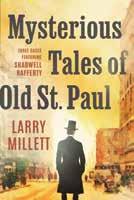
LARRY MILLETT
A journey through the wilds of nature and the twists and turns of daily life with an icon of the North Woods—now in paperback
“Deep Woods, Wild Waters gathers a lifetime of aphorisms and lays them carefully like kindling to make sure that every anecdote sparks into epiphany.”
—Sierra Club
“With Deep Woods, Wild Waters, Doug has risen to the pantheon of the great nature writers.”
—Don Shelby
Wait, young Douglas’s grandfather says as the bobber twitches on the surface of Little Lake. Be patient. And so begins an encounter with the wonder and promise of nature that will last a lifetime. In the essays of Deep Woods, Wild Waters, Douglas Wood traces the winding path that has carried him from one marvel to the next, through rocks, woods, and waters, with stops along the way for reflection on the links between human nature and the vast mysteries of the natural world. A warm, generous, and knowing guide, Wood maps a journey that, as he says, “anyone can take, through a landscape anyone can know.”
Douglas Wood is an artist, musician, educator, wilderness guide, and award-winning author of several books.
MEMOIR/NATURAL HISTORY
$17.95 Paper ISBN: 978-0-8166-3174-2
$17.95 Retail e-book ISBN: 978-1-4529-5486-8
JULY
272 pages 1 b&w illustration 5 1/2 x 8
The spellbinding initial exploits of detective Shadwell Rafferty— now available in paperback
“Gripping . . . each novella effortlessly balances fair-play deduction and page-turning action.” Publishers Weekly, starred review
“Violent, intriguing, mysterious, old St. Paul comes alive in Larry Millett’s stories as only a former street reporter could make it happen—a reporter with a taste for history, a flair for the literary, and an acute eye for human foibles.”
—John Sandford, author of the Prey series
Shadwell Rafferty’s last case may have led to his murder—but naturally, there’s more to the story. Mysterious Tales of Old St. Paul casts back to Rafferty’s beginnings with three novellas that reveal how he honed his skills before joining forces with Sherlock Holmes. Steeped in the mystery and history of nineteenth-century St. Paul, these interlocking detective stories afford the curious pleasure of watching Rafferty find his footing on his way to becoming the consummate detective whose exploits have delighted readers again and again.
Larry Millett is author of eleven mystery novels, including Mysterious Tales of Old Minneapolis, all published by the University of Minnesota Press. His nonfiction works include Lost Twin Cities, Once There Were Castles, and Minnesota Modern, winner of a Minnesota Book Award.
FICTION/MYSTERY
$16.95 Paper ISBN: 978-1-5179-1800-2
$16.95 Retail e-book ISBN: 978-1-4529-7180-3
NOVEMBER
282 pages 1 b&w illustration 6 x 9
MARIA JANION
EDITED AND TRANSLATED BY MARTA FIGLEROWICZ
Collected writings from a visionary thinker about the perilous edge between patriotism and fascism
How do nationalism and patriotism shape our understanding of identity, and when do they drift into dangerous territory? Marta Figlerowicz gathers a selection of writings from Maria Janion, one of Eastern Europe’s most profound and original intellectuals, to explore this fine line. Between her birth in Vilnius in 1926 and her death in Warsaw in 2020, Janion witnessed some of the most consequential events of the turbulent twentieth century: the rise of authoritarian nationalism in Poland, German occupation during World War II, Soviet control, and Poland’s uneasy integration into the West.
As Western countries face their own nationalist resurgences, Janion’s writing holds tools to help move through this historical condition.
The Bad Child offers sharp insights into how societies develop and assert their identities and histories—often at the cost of the people. Janion’s reflections on fascism, popular culture, and national self-fashioning presciently name and critique regional dynamics that have most recently resulted in the war between Russia and Ukraine, and they broadly expose the illusions that cultures can promote and the dangerous slide from national pride to exclusionary right-wing politics. A queer woman and survivor of World War II, a leftist who resisted Soviet orthodoxy, Janion lends a uniquely disruptive voice to contemporary discussions of fascism, and her insights resonate far beyond her Eastern European roots.

Maria Janion (1926–2020) was the greatest Polish leftist intellectual of her generation. The author of twenty-three books and hundreds of articles and essays, she inspired generations of Eastern European activists and held appointments at the University of Gdańsk and the Institute of Literary Studies in Warsaw.
Marta Figlerowicz is professor of comparative literature at Yale University. She is a Guggenheim Fellow and author of Spaces of Feeling. Her translations from Polish have appeared in PMLA and The Paris Review
CRITICAL THEORY/HISTORY
$29.00x Paper ISBN 978-1-5179-1968-9
$116.00xx Cloth ISBN 978-1-5179-1967-2
$29.00 Retail e-book ISBN 978-1-4529-7360-9
SEPTEMBER
296 pages 12 b&w illustrations 5 1/2 x 8 1/2 Cultural Critique Books Series
Retail e-book files for this title are screen-reader friendly with images accompanied by short alt text and/or extended descriptions.
TRANSLATED BY CHRISTOPHER JOHN MÜLLER
EDITED BY CHRISTOPHER JOHN MÜLLER AND CHRISTIAN DRIES
Now available in English—one of the twentieth century’s most important works on the philosophy of technology
With this first English translation of influential German philosopher Günther Anders’s 1956 masterpiece of critical theory, The Obsolescence of the Human, a new generation of readers can now engage with his prescient and haunting vision of a “world without us” dominated by technology.
Looking at technological events such as the detonation of the nuclear bomb and the arrival of televisions in our living rooms, Anders advances a warning of what humanity looks like in a world where it has surrendered all agency. He outlines the new emotional landscapes that shape our relationship to increasingly capable technology, including Promethean shame, the human sense of unease our own superior technological innovations can instill. Confronting the growing gap between what we can collectively create
and what we can individually comprehend, Anders speculates on the trajectory of a developing technological world that rapidly exceeds our ability to control or even foresee its negative consequences.
The Obsolescence of the Human prefigures contemporary posthumanist discourse and is eerily predictive of current debates around automation, global warming, and artificial intelligence. Providing new ways to conceptualize the intersection of technology and emotion, it offers groundbreaking frameworks for future-oriented ethics. Radical in both its stylistic experimentation and its theoretical insights, this new translation presents a cautionary tale regarding the human capacity to usher in its own destruction.
Günther Anders (1902–1992) was one of the twentieth century’s preeminent thinkers. He is author of more than thirty books.
Christopher John Müller is senior lecturer in the School of Communication, Society, and Culture at Macquarie University in Sydney, Australia. He is author of Prometheanism
Christian Dries is head of the Günther Anders Research Centre at the University of Freiburg in Germany and chairman of the International Günther Anders Society.
PHILOSOPHY/SCIENCE AND TECHNOLOGY
$35.00x Paper ISBN: 978-1-5179-1265-9
$140.00xx Cloth ISBN: 978-1-5179-1264-2
$35.00 Retail e-book ISBN: 978-1-4529-7398-2
DECEMBER
384 pages 1 b&w illustration 6 x 9
Posthumanities Series, volume 75
Retail e-book files for this title are screen-reader friendly with image accompanied by short alt text and/or extended description.
How data and artificial intelligence create a new, abstract digital subject
Ideal Subjects examines how samples of our lives and daily behaviors have come to reside in the world of data and artificial intelligence— and what this means for who we are and what we may become. Detailing how AI-facilitated algorithmic prediction and data modeling make “ideal subjects” of us, Olga Goriunova explores the complex ways we relate to these digital abstractions.
As more and more of our experience is funneled through computational records and models, datafied aspects of our lives are segmented and reconfigured to operate as new entities. Rather than viewing these abstract assemblages as extensions of our selves, Goriunova encourages us to consider these products of computational processes as an entirely new kind of subject, one that is both more and less than a human.
Through close readings of contemporary digital practices and data analytics, Goriunova exposes the profound ethical, aesthetic, and political implications of producing and managing these new digital subjects. Highlighting the distinctive impact of computation on contemporary subject formation while placing the present within a history of shifting conceptions of the subject, she gives us much-needed tools for understanding how our intimate selves are rendered by the abstract entities of big data. Ideal Subjects presents an uncanny and deeply fascinating portrait of modern subjectivity in the technological age.
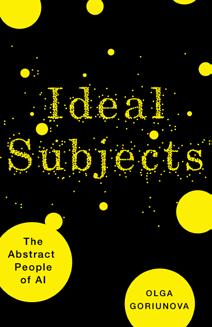
Olga Goriunova is professor of media arts at Royal Holloway, University of London. She is author of Art Platforms and Cultural Production on the Internet and coauthor of Bleak Joys: Aesthetics of Ecology and Impossibility (Minnesota, 2019).
DIGITAL CULTURE/PHILOSOPHY
$27.00x Paper ISBN: 978-1-5179-1652-7
$108.00xx Cloth ISBN: 978-1-5179-1651-0
$27.00 Retail e-book ISBN: 978-1-4529-7453-8
DECEMBER
232 pages 10 b&w illustrations 5 1/2 x 8 1/2 Posthumanities Series, volume 76
Retail e-book files for this title are screen-reader friendly with images accompanied by short alt text and/or extended descriptions.
Giuseppe Longo on Biology, Mathematics, and AI
GIUSEPPE LONGO AND ADAM NOCEK
A bold reimagining of life that bridges science, philosophy, cybernetics, and the complexities of biological existence
The Organism Is a Theory is an intriguing synthesis of decades of interdisciplinary research by eminent mathematician and biological scientist Giuseppe Longo. A unique collaboration between Longo and philosopher of technology Adam Nocek, the volume confronts foundational issues in the history of mathematics, computer science, physics, and theoretical biology.
Challenging conventional approaches that apply computational and formalist models to the biological world, Longo reveals how the limitations of these models hinder the understanding of organismic complexity, development, and evolution. Through a critique of dominant scientific paradigms, he emphasizes the need for a new biological theory that accounts for the temporal and spatial intricacies of life. Enhanced by
Nocek’s comprehensive introduction and a fascinating three-part interview with Longo, The Organism Is a Theory offers a bold rethinking of the biosciences, integrating the work of Alan Turing, Bernhard Riemann, Henri Poincaré, Kurt Gödel, and others into Longo’s vision of critical biology.
Bridging scientific and philosophical discourses, this book creatively applies insights from mathematics, physics, and computing into the study of the organism to present a new theoretical approach to understanding biological complexity that resists reductive mechanistic and informatic explanations.
Longo and Adam Nocek
Giuseppe Longo is Research Director Emeritus at the National Center for Scientific Research in France and the author or coauthor of five books and more than one hundred peer-reviewed scientific articles.
Adam Nocek is associate professor of the philosophy of technology and science and technology studies at Arizona State University. He is coeditor of The Lure of Whitehead and author of Molecular Capture: The Animation of Biology, both from Minnesota.
THEORY/PHILOSOPHY OF SCIENCE
$30.00x Paper ISBN: 978-1-5179-2050-0
$120.00xx Cloth ISBN: 978-1-5179-2049-4
$30.00 Retail e-book ISBN: 978-1-4529-7483-5
JANUARY 2026
328 pages 1 b&w illustration 5 1/2 x 8 1/2
Posthumanities Series, volume 77
Retail e-book files for this title are screen-reader friendly with image accompanied by short alt text and/or extended description.
Tracing how a notorious checkpoint shapes power, resistance, and lives in Palestine
Checkpoint 300, the highly securitized border facility between occupied Bethlehem and Jerusalem, is a central feature of Israeli control of Palestinian land and life. An apparatus of turnstiles, overcrowded corridors, and invasive inspections, the checkpoint regulates the movement of hundreds of thousands of Palestinians, granting access to some while excluding most. Offering a nuanced exploration of space, Mark Griffiths reveals Checkpoint 300 as a stark symbol of Israeli colonialism that embodies larger systems of control and violence.
Griffiths’s sensitive and timely work highlights the myriad ways Palestinians are affected by Israel’s spatial control—whether they travel through the checkpoint or not—demonstrating how colonial infrastructures of inequity extend far beyond their physical boundaries to shape daily life. Drawing on nearly a decade of fieldwork, Griffiths examines how colonial power infiltrates family dynamics, enforces
gendered mobility restrictions, shapes local economies, and extends into the global exchange of capital and security technologies. He also underscores how Palestinians endure and resist under oppressive conditions and how indigenous forms of life and living are sustained, illuminating how colonial space is contested and countered, unmade and remade.
Blending meticulous research with vivid human stories to show the lived realities of borders, power, and resistance in the West Bank, Checkpoint 300 portrays the checkpoint as an entry into the ways that colonial space is formed through security infrastructure that is both the product and producer of wider geographies of oppression, complicity, and control.

GEOGRAPHY/ANTHROPOLOGY
$27.00x Paper ISBN: 978-1-5179-1984-9
$108.00xx Cloth ISBN: 978-1-5179-1983-2
$27.00 Paper ISBN: 978-1-4529-7389-0
SEPTEMBER
250 pages 44 b&w illustrations 1 map 5 1/2 x 8 1/2
Retail e-book files for this title are screen-reader friendly with images accompanied by short alt text and/or extended descriptions.
JAMESON R. SWEET
An unprecedented study that puts mixedancestry Native Americans back into the heart of Indigenous history
Historical accounts tend to neglect mixedancestry Native Americans: racially and legally differentiated from nonmixed Indigenous people by U.S. government policy, their lives have continually been treated as peripheral to Indigenous societies. Mixed-Blood Histories intervenes in this erasure. Using legal, linguistic, and family-historical methods, Jameson R. Sweet writes mixed-ancestry Dakota individuals back into tribal histories, illuminating the importance of mixed ancestry in shaping and understanding Native and nonNative America from the nineteenth century through today.
When the U.S. government designated mixed-ancestry Indians as a group separate from both Indians and white Americans—a distinction born out of the perception that they were uniquely assimilable as well as manipulable intermediate figures—they were afforded rights under U.S. law unavailable to other Indigenous people, albeit inconsistently,
which included citizenship and the rights to vote, serve in public office, testify in court, and buy and sell land. Focusing on key figures and pivotal “mixed-blood histories” for the Dakota nation, Sweet argues that in most cases, they importantly remained Indians and full participants in Indigenous culture and society. In some cases, they were influential actors in establishing reservations and negotiating sovereign treaties with the U.S. government.
Culminating in a pivotal reexamination of the U.S.-Dakota War of 1862, MixedBlood Histories brings greater diversity and complexity to existing understandings of Dakota kinship, culture, and language while offering insights into the solidification of racial categories and hierarchies in the United States.

H I STO R IE S MIXEDBLOOD
RACE, LAW, AND DAKOTA INDIANS IN THE NINETEENTHCENTURY MIDWEST
JAMESON R. SWEET
Jameson R. Sweet (Lakota and Dakota, unenrolled) is assistant professor of American studies at Rutgers University.
NATIVE AMERICAN STUDIES/HISTORY
$30.00x Paper ISBN: 978-1-5179-2034-0
$120.00xx Cloth ISBN: 978-1-5179-2033-3
$30.00 Retail e-book ISBN: 978-1-4529-7435-4
NOVEMBER
344 pages 20 b&w illustrations 3 maps
5 1/2 x 8 1/2
Retail e-book files for this title are screen-reader friendly with images accompanied by short alt text and/or extended descriptions.
MARK MINCH-DE LEON
Reclaiming power and prophecy through California Indian intellectual resurgence and anticolonial resistance
Mark Minch-de Leon explores the anticolonial dimensions of California Indian intellectual and cultural resurgence in the aftermath of apocalypse in this compelling reexamination of Indigenous art, literature, and theory. Centering on a reinterpretation of the Ghost Dance, a ceremony first practiced in the nineteenth century, as a collective demonstration of prophecy and resilience, Indigenous Inhumanities envisions an expanded poetics of resistance through a reconfigured relationship to death and the dead. By dismantling the colonial frameworks of inclusion, recognition, and representation that reinforce settler-state power, Minch-de Leon shows how storytelling can be reclaimed as both research and as a tool for decolonization.
Taking up critical issues that the state has used to discipline California Indian relations to ancestors, such as the politics of human remains repatriation and the discourse around
California Indian genocide, Minch-de Leon centers Indigenous knowledge and social systems while challenging legal and political definitions of violence, power, and the human. Rich case studies showcase the evocative art of Frank Day, the poetry of Tommy Pico, and the writings of Deborah Miranda, highlighting how these creators advance Indigenous theory and disrupt settler categories.
By refusing reconciliation and embracing Indigenous frameworks of radical relationality and the “inhuman” (what lies outside of human control), Minch-de Leon presents a bold vision of Indigenous antihumanist survival and resurgence. Indigenous Inhumanities illuminates the path toward decolonial futures by following the radical turn the ancestors made toward the powers of the dead to bring an end to the colonial world.





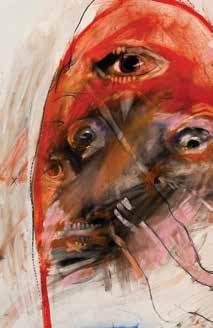
Mark Minch-de Leon is assistant professor of Indigenous studies in the Department of English at the University of California, Riverside. He is an enrolled member of the Susanville Indian Rancheria.
NATIVE AMERICAN STUDIES/AMERICAN STUDIES
$30.00x Paper ISBN: 978-1-5179-1830-9
$120.00xx Cloth ISBN: 978-1-5179-1829-3
$30.00 Retail e-book ISBN: 978-1-4529-7384-5 NOVEMBER
352 pages 14 b&w illustrations 5 1/2 x 8 1/2 Indigenous Americas Series
Retail e-book files for this title are screen-reader
friendly with images accompanied by short alt text and/or extended descriptions.
Understanding the Hawai‘i Island summit of Mauna a Wākea as a place of ancestral connection, cultural resurgence, and political resistance for Native Hawaiians
First Light is a site-specific study of Native Hawaiian resistance to the construction of the Thirty Meter Telescope (TMT) on the summit of Mauna a Wākea, the sacred volcano on the island of Hawai‘i. Drawing on personal interviews, oral histories, archival research, participant observation, and popular, legal, scientific, and Indigenous discourses, Iokepa Casumbal-Salazar explores both the campaign to build the observatory and the movement against it. He asks how astronomers have become stewards of Mauna a Wākea while Kanaka ‘Ōiwi (Aboriginal Hawaiians), in protest, are recast as obstructing progress and clinging to ancient superstitions.
Contextualizing contemporary resistance to telescope expansion within the past 125 years of struggle against U.S. empire in Hawai‘i, Casumbal-Salazar argues the Kanaka-led efforts to protect their ancestral lands did not begin with the TMT and only become legible when understood in the broader history of resistance to U.S. settler hegemony as told through the voices and actions of kiaʻ
āina (land defenders). First Light explores how settler science, capital, and law have been mobilized in ways that rationalize industrial development projects like the TMT and promote a vision of “coexistence” that enables the dehumanization of Kanaka ‘Ōiwi and their alienation from ʻāina.
Challenging the assumptions and aggressions of neoliberal environmental policy, settler multiculturalism, and U.S. military occupation, First Light reinforces calls for a moratorium on new telescope development and a literacy in Kanaka ‘Ōiwi movements for life, land, and Ea (independence, sovereignty).
Kanaka ‘Ōiwi
Resistance to Settler Science at Mauna a Wākea Iokepa Casumbal-Salazar

Iokepa Casumbal-Salazar is assistant professor in the Department of Critical Race and Ethnic Studies at UC Santa Cruz.
NATIVE STUDIES/ANTHROPOLOGY
$30.00x Paper ISBN: 978-1-5179-0246-9
$120.00xx Cloth ISBN: 978-1-5179-0245-2
$30.00 Retail e-book ISBN 978-1-4529-7427-9
NOVEMBER
336 pages 24 b&w illustrations 5 1/2 x 8 1/2
Retail e-book files for this title are screen-reader friendly with images accompanied by short alt text and/or extended descriptions.
JOANNA HEARNE AND KARRMEN CREY, EDITORS
A first-of-its-kind collection to transform our understanding of digital media from Indigenous women creators
Indigenous women form a vital force in digital media production now and have over the past several decades—in fact, nearly three quarters of the projects at the 2017 imagineNATIVE Film and Media Arts Festival were created by women. By Their Work highlights the prismatic nature of Indigenous women’s digital media, connecting the digital arts with their creative labor and adaptive activism.
Joanna Hearne and Karrmen Crey bring together a collection of essays and interviews to highlight the voices of powerful and important media makers, from Indigenous video game creators to animators to social media influencers and from theorists of early Indigenous digital media to current practitioners, including trans and nonbinary creators often left out of public narratives about the digital. Creating a space to hear critical voices on Indigenous media history, theory, and production, the contributors share stories, genealogies, and practices behind Indigenous women’s power and presence in the digital world.
Focusing on the history of digital media as a whole, this collection presents a compelling case for Indigenous women’s crucial roles across the history of digital forms and platforms. In doing so, By Their Work transforms digital Indigenous studies in the twenty-first century.
Contributors: Nanobah Becker; Reilley BishopStall, McGill U; Meagan Byrne; Tawny Trottier Cale; Dana Claxton; Crystal Harrison Collin; Elizabeth Day; Kristin L. Dowell, Florida State U; Miranda Due; Heid E. Erdrich; Marcella Ernest, U of New Mexico; Marisa Erven; Skawennati Tricia Fragnito; David Gaertner, U of British Columbia; Carol Geddes; Faye Ginsburg, New York U; Patuk N. Glenn; Lisa Jackson; Jacqueline Land, William Jewell College; Jason Edward Lewis, Concordia University, Montreal; Joshua D. Miner, U of Kansas; Salma Monani, Gettysburg College; Jas M. Morgan, Simon Fraser U; Archer Pechawis, York U; Mikhel Proulx, Queen’s U Canada; Jolene Rickard, Cornell U; Channette Romero, U of Georgia; Wendi Sierra, Texas Christian U.
by their work Women’s Digital Indigenous America Media in North

Joanna Hearne is Jeanne Hoffman Smith Professor of Film and Media Studies at the University of Oklahoma. She is author of Native Recognition: Indigenous Cinema and the Western and Smoke Signals: Native Cinema Rising and coeditor of ReFocus: The Films of Wallace Fox
Karrmen Crey (Sto:lo and a member of the Cheam Band) is associate professor in the School of Communication at Simon Fraser University and author of Producing Sovereignty: The Rise of Indigenous Media in Canada (Minnesota, 2024).
NATIVE AMERICAN STUDIES/MEDIA STUDIES
$30.00x Paper ISBN: 978-1-5179-1906-1
$120.00xx Cloth ISBN: 978-1-5179-1905-4
$30.00 Retail e-book ISBN: 978-1-4529-7447-7
NOVEMBER
344 pages 25 b&w illustrations 7 x 10
UMAYYAH CABLE
A history of cinema’s role in popularizing the politics of Palestinian liberation
For decades, Arab American activists and allies have used film, video, and multimedia to mobilize support for the Palestinian cause in the United States. In this detailed history of cinema’s role within the broader solidarity movement, Umayyah Cable analyzes the various strands of cinematic activism that have helped move Palestinian liberation politics from the periphery and into the mainstream.
Cable charts the shifting discourse around Palestine as it has been shaped by grassroots film production and alternative media distribution networks as well as more conventional outlets. Ranging from the circulation of educational filmstrips by the Association of Arab American University Graduates in the 1970s to the treatment of Palestinian solidarity at contemporary Hollywood awards ceremonies and film festivals, Mainstreaming Palestine tells the story of how cinema has promoted Palestinian liberation and solidarity politics. While highlighting various public controversies
and struggles against censorship, Cable also acknowledges the drawbacks of the Palestinian cause being subsumed by the mainstream, discussing how activism risks becoming fashionable, undermining the radical potential of the very tools that helped bring it there.
Combining archival research, ethnographic observation and interviews, text analysis, and visual analysis of film, video, and multimedia, Mainstreaming Palestine encourages readers to critically assess the relationship between the politics of liberation and the all-consuming engine of contemporary capitalism. By underscoring the impact of visual media on the evolution of the Palestinian solidarity discourse, this book offers both a treatise on the practical power of cinema and a necessary historicization of an urgent issue in American politics.
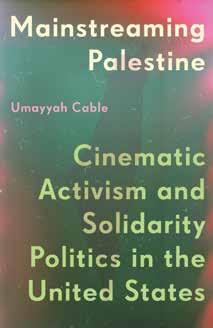
Arbor.
CINEMA AND MEDIA STUDIES/AMERICAN STUDIES
$27.00x Paper ISBN: 978-1-5179-1996-2
$108.00xx Cloth ISBN: 978-1-5179-1995-5
$27.00 Retail e-book ISBN 978-1-4529-7413-2
OCTOBER
272 pages 31 b&w illustrations 5 1/2 x 8 1/2
Retail e-book files for this title are screen-reader friendly with images accompanied by short alt text and/or extended descriptions.
ELIZABETHE PAYNE AND MELISSA J. SMITH, EDITORS

Challenging the myths about LGBTQ+ kids and bullying: what it means to protect queer kids in schools
Conversations around LGBTQ+ kids in school have become dominated by the subject of bullying. Although this may be due to goodfaith efforts to protect vulnerable students, Queer Kids and Social Violence demonstrates that a focus on bullying as acts of individual peer aggression fails to address the social norms that perpetuate the violence. Considering the broader contexts of bullying, this volume offers ways to engage with queer youth that are both more humanizing and more likely to create sustainable change.
Essays by leading international scholars analyze how bullying discourse shapes policy and practice, using in-depth case studies, research findings, and examinations of political policy to guide readers through the various forms of violence, identity regulation, and identity erasure in schools. Offering conversation-shifting interventions to respond
to a difficult and frightening political moment for LGBTQ+ youth, Queer Kids and Social Violence is a rounded, empathetic picture that does queer youth justice and points the way toward safer schools for all.
Contributors: Ana María Amigo-Ventureira, Durell M. Callier, Cristyn Davies, Renée DePalma, Tania Ferfolja, Jessica Fields, Elliot Fonarev, Jen Gilbert, Tristan Gleason, Dominique C. Hill, Angela Ingram, Laurie Gutmann Kahn, Cris Mayo, Mollie McQuillan, Aoife Neary, C.J. Pascoe, Victoria Rawlings, EJ Renold, Jessica Ringrose, Kerry H. Robinson, Dorte Marie Søndergaard, Cris Townley, Jacqueline Ullman, Boni Wozolek.
Elizabethe Payne is founder and director of QuERI, the Queering Education Research Institute. Her work has been published widely, including in Teachers College Record; QED: A Journal in GLBTQ Worldmaking; and Educational Administration Quarterly
Melissa J. Smith is associate professor of education at Fairleigh Dickinson University. She is associate director of the Queering Education Research Institute and has published research in many journals, including Equity and Excellence in Education, Educational Administration Quarterly, and Teachers College Record
EDUCATION/QUEER STUDIES
$35.00x Paper ISBN: 978-1-5179-1716-6
$140.00xx Cloth ISBN: 978-1-5179-1715-9
$35.00 Retail e-book ISBN 978-1-4529-7445-3
OCTOBER
424 pages 7 b&w illustrations 7 x 10
Retail e-book files for this title are screen-reader friendly with images accompanied by short alt text and/or extended descriptions.
CAMERON KUNZELMAN
An entertaining deep dive into the world, gameplay, and evolution of the hugely successful Assassin’s Creed video game franchise
A hooded figure stands in a bell tower overlooking medieval Jerusalem, surveying his prey. Parkour-style, he leaps down into the square to kill his target before vanishing into the crowd . . .
Released in fall 2007, Assassin’s Creed transformed video gaming. Across more than a dozen franchise entries, players engage with the eternal conflict between the Order of Assassins and the nefarious Templar Order, carrying out missions in a series of painstakingly rendered historical settings, from the Holy Lands during the Third Crusade to Renaissance Italy, the Age of Piracy, the French Revolution, and Victorian London. Everything is Permitted is an analysis of the development, evolution, gameplay, and world-building of this sprawling and distinctive franchise.
Cameron Kunzelman examines key themes and concepts that connect the games in the series. Combining close readings of the games themselves with discussion of the broader landscape of video game franchises since its initial release, he uncovers what it means for a game to be part of the Assassin’s Creed franchise. Kunzelman maps the elements that contribute to the immersiveness and continual playability of the games, showing how historically inflected conspiracies and science fictional premises ground the fantastical stories the games tell on a massive scale.
Diving into the real-world histories and ideas that the game designers used for inspiration, Kunzelman argues that the virtual conflicts between the franchise’s opposing sides offer intriguing insights into actual reality, from ethical dilemmas to the roles of freedom and fate. He demonstrates how, by incorporating themes of means and ends, control and freedom into its gameplay, the franchise engages with profound questions in a sustained, long-form way that is unique among video games. As the Assassins say, “Nothing is true, everything is permitted.”
IS E verything
CAMERON KUNZELMAN Permitted
On Assassin’s Creed


Cameron Kunzelman is assistant professor in the Department of Communication Studies and Theatre at Mercer University. He is author of The World Is Born from Zero: Speculation and Video Games, and his writing about video games has appeared in Kotaku, Polygon, and Vice. He podcasts about culture at Ranged Touch
DIGITAL CULTURE/MEDIA STUDIES
$26.00x Paper ISBN: 978-1-5179-1494-3
$104.00xx Cloth ISBN: 978-1-5179-1493-6
$26.00 Retail e-book ISBN: 978-1-4529-7364-7
NOVEMBER
248 pages 9 b&w illustrations 5 1/2 x 8 1/2
Retail e-book files for this title are screen-reader friendly with images accompanied by short alt text and/or extended descriptions.
Examining musical instrument destruction through an ecological and intermedial lens
Musical instruments are typically seen as objects both used and maintained with ritualistic care. But what happens when they’re tossed from homes in mudslides, burned during ecstatic parties, or waterlogged by pop stars in viral videos—and how do these elemental interactions transform the way we see and play instruments? Piano Decompositions asks what happens when we let go of controlling musical instruments. What kind of meanings start to sound when instruments are moved out of the protected cultural space and engage with their surrounding elements?
Heidi Hart and Beate Schirrmacher trace the history of destroyed and decaying pianos, both sorting them within the realm of artistic violence against instruments and following their return journeys into water, sand, and soil. They parse the artistic vision of Annea Lockwood, whose iconic burning, drowning, and decaying Piano Transplants presented a novel means of drawing attention to the
increasing threats of climate change in the 1960s and ’70s. Turning to instruments made from found materials and others played collaboratively with wind and water, they demonstrate how human sound making is entangled in the more-than-human world.
Showing how the piano can transform conversations around the Anthropocene and environmental destruction, Hart and Schirrmacher find the instrument to be a potent creative and ecological force, a medium to connect with environments in an explorative, attentive way. Piano Decompositions unearths new ways to relate our concepts of curiosity, pleasure, and music to the natural world.
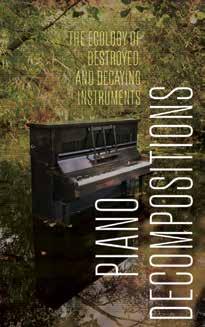

Heidi Hart is an independent arts researcher and guest instructor at Linnaeus University Centre for Intermedial and Multimodal Studies. She is author of several books, including Climate Thanatology, Music and the Environment in Dystopian Narrative, and Hanns Eisler’s Art Songs
Beate Schirrmacher is associate professor in comparative literature at Linnaeus University and member of the Linnaeus University Center for Intermedial and Multimodal Studies. She is coeditor of Truth Claims Across Media and Intermedial Studies
ART/ENVIRONMENTAL STUDIES
$25.00x Paper ISBN: 978-1-5179-1937-5
$100.00xx Cloth ISBN: 978-1-5179-1936-8
$25.00 Retail e-book ISBN: 978-1-4529-7457-6
JANUARY 2026
160 pages 8 b&w illustrations 5 x 8
Art after Nature Series
Retail e-book files for this title are screen-reader friendly with images accompanied by short alt text and/or extended descriptions.
An examination of surrealism’s unofficial ethnography of marginalized subjectivities
In interwar Paris, the encounter between surrealism and the nascent discipline of ethnology led to an intellectual project now known as “ethnographic surrealism.” In The Persistence of Masks, Joyce Suechun Cheng considers the ethnographic dimension of the surrealist movement in its formative years through a close look at the reviews Documents (1929–30) and Minotaure (1933–39) as well as the surrealist writer-turnedethnographer Michel Leiris’s ethnography of possession. Analyzing surrealist aesthetic criticism, art, poetry, and field research in terms of a common interest in marginalized modes of subjectivity, Cheng argues that the surrealists used the figures of the mask, the veil, the hand, and the hat to radically reconceive the subject as nonhegemonic, nonanthropocentric, and feminine-identified.
Though ethnographic surrealism usually refers to the collaboration between professional ethnologists at the Institut de l’Ethnologie in Paris and Georges Bataille’s so-called dissident circle of surrealists, Cheng demonstrates that surrealism’s unofficial ethnography began long before the founding of the movement. Starting
with André Breton’s wartime text “Subject” (1916), written when he was still a young psychiatric intern treating traumatized soldiers, she shows how the future surrealist poet shifted from a clinical to a para-ethnographic approach to subjectivity when adopting his patient’s first-person voice as a textual mask.
Revealing surrealism to be always implicitly ethnographic, Cheng uncovers deep affinities between archrivals Breton and Bataille, highlights psychiatry’s underacknowledged role in surrealism’s lay ethnography, and theorizes the surrealists’ feminine identification as a means of critiquing power. By broadening the scope of ethnographic surrealism, The Persistence of Masks offers new insights that challenge longstanding beliefs about this multifaceted movement in poetry, the arts, and culture.
Suechun Cheng is associate professor of art history at the University of Oregon. Her essays and articles on dada, surrealism, and primitivism have appeared in journals such as Modernism/modernity; Res: Anthropology and Aesthetics; and Gradhiva
ART HISTORY/ANTHROPOLOGY
$30.00x Paper ISBN: 978-1-5179-1778-4
$120.00xx Cloth ISBN: 978-1-5179-1777-7
$30.00 Retail e-book ISBN 978-1-4529-7415-6
OCTOBER
248 pages 68 b&w illustrations 7 x 10
Surrealisms: The International Society for the Study of Surrealism Book Series
Serving the core mission of the International Society for the Study of Surrealism (ISSS), this series is dedicated to the global iterations and site-specific repercussions of the surrealist movement, featuring inventive scholarship on surrealism across established disciplinary boundaries. Engaging with the full range and exigency of surrealist thinking, Surrealisms: The International Society for the Study of Surrealism Book Series will feature topics both within and beyond the European context, highlighting new critical approaches to gender, race, and sexuality as well as new directions in geopolitics, ecology, anticolonialism, and science.
Unraveling the hidden influence of the paranormal on science, literature, and belief
Telepathy, clairvoyance, precognition, and telekinesis: these attributes of the paranormal mind are widely dismissed as nonsense, but what can an exploration of such pseudoscientific phenomena tell us about accepted scientific and cultural thought? In Parascientific Revolutions, Derek Lee traces the evolution of psi epistemologies across the twentieth and twenty-first centuries to uncover how these ideas have migrated into scientific fields such as quantum physics and neurology, as well as diverse literary genres including science fiction, ethnic literature, and even government training manuals.
Lee introduces the groundbreaking concept of “parascience,” a dynamic cultural space where ideas rejected by the scientific establishment blend with alternative strains of literary, mythic, and philosophical thought to regenerate and return to mainstream discourse. From early modernist works by
James Joyce to postwar speculative fiction by Philip K. Dick to ethnofuturist narratives by Ruth Ozeki, Parascientific Revolutions demonstrates how cultural and intellectual currents reshape paranormal ideas over time. Examining psychic surveillance programs like Project Stargate and bizarre particles of extrasensory perception such as the psitron, Lee illustrates the ways paranormal concepts persist and evolve to influence culture.
Presenting pseudoscience as an inevitable by-product of the scientific process, Parascientific Revolutions offers fresh insight into how the paranormal mind continually challenges our understanding of knowledge and belief. It invites readers to reconsider the boundaries between science and the unknown, revealing a world where speculative thought and empirical investigation are deeply intertwined.

The Science and Culture of the Paranormal
CULTURAL STUDIES/SCIENCE AND TECHNOLOGY STUDIES
$28.00x Paper ISBN: 978-1-5179-1889-7
$112.00xx Cloth ISBN: 978-1-5179-1888-0
$28.00 Retail e-book ISBN: 978-1-4529-7400-2
AUGUST
296 pages 7 b&w illustrations 5 1/2 x 8 1/2 Proximities Series
Retail e-book files for this title are screen-reader friendly with images accompanied by short alt text and/or extended descriptions.
How twentieth-century developments in science influenced the aesthetics of the burgeoning American cartoon
What do technical renderings of plant cells in trees have to do with Disney’s animated opus Fantasia? Quite a bit, as it turns out: such emergent scientific models and ideas about nature were an important inspiration for Disney’s groundbreaking animated realism. In Drawn to Nature, Colin Williamson presents a vivid portrait of how developments in biology, physics, and geology between 1900 and the long 1960s influenced not just Disney but the American cartoon industry as a whole.
Drawing on original research on the scientific appetites of animators and studios such as Winsor McCay, the Fleischer Brothers, Walt Disney, and United Productions of America, Williamson opens new avenues for understanding the history and aesthetics of cartoons. Interrogating the differences between art and science and reconsidering
the realms of dream, magic, and fantasy as they pertain to pop culture, he yields novel proposals for bridging longstanding divides between animation, live-action cinema, and the history of science.
Drawn to Nature not only illuminates the extent to which animators have drawn on scientific insights, it also considers seriously how commercial animations themselves participate in scientific discourse. It revises and revitalizes our existing narratives about the history of American animation to uncover the many ways science informs our collective cultural imagination.
colin williamson

Colin Williamson is assistant professor of cinema studies at the University of Oregon, author of Hidden in Plain Sight: An Archaeology of Magic and the Cinema, and associate editor of Animation: An Interdisciplinary Journal
CINEMA AND MEDIA STUDIES/SCIENCE AND TECHNOLOGY STUDIES
$28.00x Paper ISBN: 978-1-5179-1488-2
$112.00xx Cloth ISBN: 978-1-5179-1487-5
$28.00 Retail e-book ISBN: 978-1-4529-7425-5
DECEMBER
232 pages 60 b&w illustrations 14 color plates
5 1/2 x 8 1/2
BRIAN BARTELL
Uncovering the Black Power movement’s contributions to theorizing the politics of automation
On the Eve of the Cybercultural Revolution offers a comprehensive look at the Black Power movement’s theoretical work and insights into the entanglement of capitalism, technology, and racism. Drawing upon James and Grace Lee Boggs’s expanded notion of the cybercultural era, Brian Bartell demonstrates how a range of artists, writers, and activists from the 1960s prefigured the wider discourse around automation and made it a central concern of their politics.
Rather than reducing automation to an isolated technical phenomenon, theorists of the Black radical tradition identified its important historical antecedents in colonialism and plantation slavery, emphasizing how the emerging cyberculture joined with issues such as the reorganization of labor, ecological
harm, and racial inequality. Examining the work of Martin Luther King Jr., Noah Purifoy, the Black Panthers, and others, On the Eve of the Cybercultural Revolution outlines the new forms of social reproduction conceived outside of the dominant structures of racial capitalism.
Bartell synthesizes a wide range of source texts, including political speeches, literature, and activist archives, to show how the Black Power movement sought to create a postscarcity, more-than-capitalist economy. By shedding light on the movement’s underexplored engagement with theories of technology, he provides a crucial key to understanding the historical dynamics responsible for our technocapitalist present.
On
Brian Bartell teaches courses on politics and aesthetics, media studies, and race and technology studies at ArtCenter College of Design and Occidental College in Los Angeles.
AMERICAN STUDIES/AFRICAN AMERICAN STUDIES
$27.00x Paper ISBN: 978-1-5179-1393-9
$108.00xx Cloth ISBN: 978-1-5179-1392-2
$27.00 Retail e-book ISBN 978-1-4529-7382-1
OCTOBER
264 pages 5 1/2 x 8 1/2
Retail e-book files for this title are screen-reader friendly.
JOSHUA COMAROFF
How economic transformation and the spirit world collide in hypermodern Singapore
In Singapore, the financial center of Southeast Asia, hyperurbanization and commercial development exist alongside enduring belief in the economic power of ghosts: in their ability to control the flows of money and value and to determine the outcome of investments and wagers. Spectropolis explores the unlikely collusion of these two systems, demonstrating both the productive role of popular beliefs in the modern world and the surprising correlations between “late” capitalism and the workings of the spirit realm.
Detailing the logic and practices of Singapore’s ghost economy—from performing exorcisms on real estate development sites to offering
money and commodities to the dead as a hedge against precarious real-world transactions—Joshua Comaroff shows how speculative finance, largely governed by chance and volatility, is understood via its inherently spectral qualities. Through the influence of Chinese Buddhist-Taoist thought, the movement of capital is placed under the sway of cosmology and geomancy, resulting in a built environment that is both technologically advanced and quite literally enchanted.
Based on detailed case studies and years of extensive fieldwork, Spectropolis argues for the power of popular belief systems to theorize contemporary socioeconomic conditions and to give form to collective affect as well as shared aspirations and anxieties. As Comaroff demonstrates, the uniquely all-consuming nature of Singapore’s tightly compressed urban economy is such that it may subsume even that which lies beyond the threshold of life itself.

Joshua Comaroff is assistant professor of architecture at National University of Singapore. He is coauthor of Horror in Architecture: The Reanimated Edition (Minnesota, 2024).
URBAN STUDIES/ASIAN STUDIES
$27.00x Paper ISBN: 978-1-5179-1934-4
$108.00xx Cloth ISBN: 978-1-5179-1933-7
$27.00 Retail e-book ISBN: 978-1-4529-7391-3
NOVEMBER
272 pages 19 b&w illustrations 5 1/2 x 8 1/2
Retail e-book files for this title are screen-reader friendly with images accompanied by short alt text and/or extended descriptions.
Exposing the ableism underlying medical innovation
As medical advancements continue to shape the detection, diagnosis, and treatment of disability and illness, technology is often presented as a pathway to autonomy. Challenging this assumption, Rebecca Monteleone shows how medical technologies contribute to a cruel double bind, forcing disabled people to be accountable for adapting to a world built by and for nondisabled people while dismissing their lived experiences in favor of medical expertise. Far more complex than simple progress, these technologies are more oppressive than liberating when they place the burden of care on individuals and perpetuate societal ableism that demands that bodies look, move, and function in certain ways.
The Double Bind of Disability examines the complex relationship between medical technologies and their users, highlighting
tensions between personal responsibility and medical authority. Sharing the perspectives and experiences of users of three medical technologies (prenatal genetic screening, deep brain stimulation, and do-it-yourself artificial pancreas systems), Monteleone analyzes how users navigate the constraints of these systems and also imagine a new, more liberatory approach to healthcare.
Asserting a bold vision, Monteleone describes a future where medical interventions take seriously the lived expertise of disabled people to address ableist infrastructures rather than require the modification of nonnormative bodyminds. She calls for a radical reimagining of medical technology that moves beyond individualistic frameworks to embrace collective experience and embodied knowing.
Medical

Rebecca Monteleone is assistant professor of disability and technology at the University of Toledo. She is coeditor of Disability and Social Justice in Kenya, and her writing has been published in the journals Hypatia, Disability Studies Quarterly, and the Canadian Journal of Disability Studies
DISABILITY STUDIES/SCIENCE AND TECHNOLOGY STUDIES
$25.00x Paper ISBN: 978-1-5179-1768-5
$100.00xx Cloth ISBN: 978-1-5179-1767-8
$25.00 Retail e-book ISBN: 978-1-4529-7406-4
NOVEMBER
216 pages 5 1/2 x 8 1/2
Retail e-book files for this title are screen-reader friendly.
LEON J. HILTON
How to remake the world with neurodivergence at its heart
What if we embraced neurodivergent ways of being not as deviations to be corrected but as vital ways of inhabiting the world? What new realities might emerge? Bringing a much-needed humanistic perspective to the study of autism and other forms of neurodivergence, Counter-cartographies offers a bold reimagining of neurological difference, moving beyond rigid diagnostic frameworks to uncover more expansive, generative modes of existence.
Engaging the work of Fernand Deligny to trace how modern taxonomies of neurodivergence have hardened over time, Leon J. Hilton questions how these categories might instead serve as tools for remapping the world with neurodivergence at its center. At the heart of Counter-cartographies is an exploration of performance and performativity that reveals how the norm of neurotypical reality is continually reinforced through acts of doing, redoing, and undoing.
Charting the historical shift away from “mind” and toward “brain” and moving fluidly across disciplines—from digital art and documentary cinema to cybernetics and radical mental health movements—Hilton illuminates the deep interconnections between performance, perception, and the historical construction of the “neurotypical.” Through close readings of works by William Pope.L, Mel Baggs, Wu Tsang, and others, Hilton also examines how neurodivergence has been represented, embodied, and materialized in contemporary art and media. Restless, engrossing, and persistently attuned to moments of rupture when the neurotypical order falters, Countercartographies charts a path toward a more capacious, imaginative world.
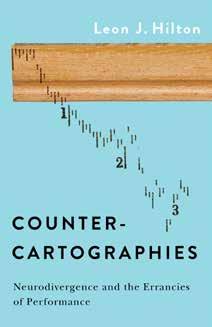
Leon J. Hilton is assistant professor of theatre arts and performance studies and co-convener of the Disability Studies Working Group at Brown University. He is a member of the editorial collective of the journal Social Text and on the advisory board of Spectrum Theatre Ensemble, a neurodiverse theatre company based in Providence, Rhode Island.
$27.00x Paper ISBN: 978-1-5179-0903-1
$108.00xx Cloth ISBN: 978-1-5179-0902-4
$27.00 Retail e-book ISBN 978-1-4529-6316-7
AUGUST
238 pages 14 b&w illustrations 5 1/2 x 8 1/2
Retail e-book files for this title are screen-reader friendly with images accompanied by short alt text and/or extended descriptions.
The performative arts of political communication and representation in Mumbai
In an era of global political passions, many have wondered whether some sort of natural affinity exists between political style and substance. Does liberal democracy speak the language of rationality and sincerity while political emotion, imagery, and embodiment properly belong to authoritarianism? Taking an ethnographic approach to the relationship between political form and political content, Drama of Democracy explores the material substance of representations (things like heady crowds and rousing images) together with language-based forms of political communication, such as public oration and community meetings.
Drawing on a decade of research in the city of Mumbai, Lisa Björkman shows that embodied performance is the very site and substance of representation and demonstrates how Mumbaikars evaluate performative bids to represent. The ethnographic accounts demonstrate the extraordinary fluency in this evaluative work in Mumbai, where people
from all walks of life are remarkably astute at navigating and assessing political signs and representations, endlessly discussing and debating possible meanings of the city’s dense material-semiotic ecologies—whether words or images, cash or crowds, flyers or flowers.
In Mumbai, Björkman argues, the evaluative criterion of representation is not whether something is sign or substance, or even whether people are deemed to utter truths or falsehoods. Rather, what matters is whether and how a performance activates and actuates the social relations and political subjectivities that it professes to display. Drama of Democracy highlights Mumbaikars’ communicative fluency and theatrical acumen to offer a conceptual toolbox through which contemporary political churnings around the globe might be understood.
LISA BJÖRKMAN



Lisa Björkman is associate professor at the University of Louisville and senior research fellow at the Max Planck Institute for Social Anthropology. She is author of Pipe Politics, Contested Waters: Embedded Infrastructures of Millennial Mumbai; Waiting Town: Life in Transit and Mumbai’s Other World-Class Histories; and Bombay Brokers
ANTHROPOLOGY/POLITICAL SCIENCE
$30.00x Paper ISBN: 978-1-5179-1894-1
$120.00xx Cloth ISBN: 978-1-5179-1893-4
$30.00 Retail e-book ISBN 978-1-4529-7358-6
SEPTEMBER
360 pages 40 b&w illustrations 4 maps
5 1/2 x 8 1/2
US Imaginaries of Revolutionary Central America
The cultural reverberations of Central America’s failed revolutions on US intellectual thought
The thwarted Central American revolutions during the latter half of the twentieth century marked a watershed in what had become a global anti-imperialist movement striving for a more egalitarian future. Examining a range of documentary, literary, and artistic works, States of Defeat looks at how leftwing intellectuals in the United States reckoned with the fallout from these defeats through wide-ranging creative expressions of indignation, cynicism, and grief.
As he argues for the historical significance of Central America in the transition out of the Cold War, Eric A. Vázquez shows how the unfulfilled revolutionary ambitions in Nicaragua, El Salvador, and Guatemala prompted intellectuals in the United States to reexamine their desires for radical
transformation. Analyzing novels, memoirs, anthropological writings, documentary film, and archival materials from the 1980s and 1990s, he demonstrates how these texts prefigured later anxieties about secrecy and securitization, the rise of nongovernmental organizational forms, and state failure.
Examining the legacies of unfulfilled antiimperialist political ideals and their implications for the global left in the twenty-first century, States of Defeat offers a renewed perspective on the function of Central America in the US imagination. Amid a resurgence of crackdowns on public protest and a rise in virulent anti-immigrant campaigns throughout the United States and globally, Vázquez presents urgent and valuable insights into the viability of political solidarity and state power.

Eric A. Vázquez is assistant professor in American studies and Latina/o/x studies at the University of Iowa.
AMERICAN STUDIES/LATIN AMERICAN STUDIES
$27.00x Paper ISBN: 978-1-5179-1990-0
$108.00xx Cloth ISBN: 978-1-5179-1989-4
$27.00 Retail e-book ISBN: 978-1-4529-7437-8
NOVEMBER
256 pages 14 b&w illustrations 5 1/2 x 8 1/2
Exploring the frozen past to rethink our warming future
Do we really know what cold is? In Arcticologies, Lowell Duckert delves into early modern European texts to trace how representations of frigidity from the sixteenth and seventeenth centuries have contributed to historical understandings of climate and contemporary debates on climate change. Arguing that human culture and science are, in fact, indebted to the cold, Duckert suggests that these early depictions offer critical terms for advancing the aims of climate-change activism and assisting in counterapocalyptic thinking.
An imaginative and intellectual journey, Arcticologies reveals the enduring role of cold in wide-ranging storytelling traditions. It draws on Shakespeare’s Hamlet and Othello and the works of Thomas Dekker, René Descartes, and Thomas Hobbes and is informed throughout by contemporary Indigenous writing, including that of Sheila Watt-Cloutier and Leanne Betasamosake Simpson. In reflecting on these assorted accounts, Duckert sees cold as not
only an environmental hardship but a source of cultural creativity and resilience, highlighting moments of collaboration between humans and the icy world, from arctic exploration to urban fairs on frozen rivers.
Cold, Duckert makes clear, is more than the absence of warmth. Situating our contemporary obsession with impending planetary meltdown within the mazelike arcticologies of the past, Duckert shows how early modern cold brought about forms of curiosity, vocabulary, and interspecies relationality that can serve us today. In doing so, he asks us to identify what has been lost and who is at risk in today’s thinning cold— while also urging us to imagine alternative futures focused not on inevitable and total collapse but on adaptation and preserving what remains.

Lowell Duckert is associate professor of English at the University of Delaware. He is author of For All Waters: Finding Ourselves in Early Modern Wetscapes and coeditor of Elemental Ecocriticism: Thinking with Earth, Air, Water, and Fire and Veer Ecology: A Companion for Environmental Thinking, all from Minnesota.
LITERARY CRITICISM/ENVIRONMENTAL STUDIES
$30.00x Paper ISBN 978-1-5179-1358-8
$120.00xx Cloth ISBN 978-1-5179-1357-1
$30.00 Retail e-book ISBN 978-1-4529-7366-1
AUGUST
376 pages 15 b&w illustrations 5 1/2 x 8 1/2
Mapping the transformative personal journeys of the displaced
The travel writing genre has long been associated with a certain kind of privileged and autonomous journey, encouraged by society and geared toward individual growth. Presenting an important counterpoint to this tradition, Invisible Exile considers a diverse set of narratives that explore travel undertaken as a result of displacement. In this creative work of cultural geography, Kimberley Kinder sheds light on the transformative accounts of those who must navigate across and within spatial boundaries due to marginalization and violence.
Unfolding as an extended trip, with each chapter marking out the next phase of one imaginatively constructed itinerary, Invisible Exile analyzes forty works in which the authors grapple with themes of loss and alienation. Kinder emphasizes the aspect of travel writing
that posits spatial movement as a means of reinventing oneself, showcasing the personal insight and renewal these travelers find on their paths into, through, and partially out of, exile.
By foregrounding the experiences of forced and reluctant migrants and refugees, Invisible Exile poses a critical challenge to the existing genre of travel literature, expanding its scope. Examining a vast range of twenty-first-century writings, Kinder crafts a moving, episodic journey that carries readers through displacement, transformation, and redemption.









Kimberley Kinder is associate professor of urban and regional planning at the Taubman College of Architecture and Urban Planning at the University of Michigan. She is author of several books, including The Radical Bookstore: Counterspace for Social Movements (Minnesota, 2021).
GEOGRAPHY/LITERARY CRITICISM
$29.00x Paper ISBN: 978-1-5179-1947-4
$116.00xx Cloth ISBN: 978-1-5179-1946-7
$29.00 Retail e-book ISBN: 978-1-4529-7449-1
DECEMBER
312 pages 5 1/2 x 8 1/2
Retail e-book files for this title are screen-reader friendly.
FRANCESCO ZUCCONI
How the cinematic gaze reveals the hidden operations of border zones
Examining a variety of documentary films made along the borders of Europe since the turn of the twenty-first century, Border Mediascapes takes a cinematic eye to the technologies employed in governing spatial movement. Working at the intersections of social sciences, political theory, contemporary media, and cinema aesthetics, this book expands our understanding of the border as not just a static political boundary inscribed on a map but a complex, dynamic network of human and nonhuman agents.
Francesco Zucconi asserts that contemporary borders are environments defined by media: a perpetually shifting set of interactions between physical bodies and sensors, surveillance cameras, satellites, mapping programs, digital signage, and cellular devices. Analyzing documentaries filmed by or in collaboration with migrants, Border Mediascapes demonstrates how cinema
can be used to reveal the otherwise unseen apparatuses that facilitate systematized practices of recognition, expulsion, and erasure.
As he details the ways specific border technologies measure and identify individuals as part of the larger project of territorial control, Zucconi illustrates the effectiveness of cinema for capturing the entanglement of geopolitics and biopolitics. Viewing the cinematic perspective as simultaneously analytical, critical, and complicit with the new technological frontier, Zucconi shows how the medium can deepen our understanding of borders as sites of power, resistance, and resilience.

Francesco Zucconi is associate professor of film and media theory at the IUAV University of Venice and is author of several books, including Displacing Caravaggio: Art, Media, and Humanitarian Visual Culture
CINEMA AND MEDIA STUDIES/GEOGRAPHY
$25.00x Paper ISBN: 978-1-5179-1891-0
$100.00xx Cloth ISBN: 978-1-5179-1890-3
$25.00 Retail e-book ISBN: 978-1-4529-7455-2
FEBRUARY 2026
200 pages 26 b&w illustrations 5 1/2 x 8 1/2
Retail e-book files for this title are screen-reader friendly with images accompanied by short alt text and/or extended descriptions.
The roots—and reach—of “Great Replacement” theory in France and beyond
The Eurabia Myth delves into the origins and evolution of far-right anxieties about the future of a Europe that welcomes postcolonial migration, racial and ethnic diversity, and tolerance of Islam. Nationalists deploy the specter of “Eurabia”—an Arabized and Islamized Europe—as a doomsday scenario of demographic replacement that only they can avert. Mehammed Amadeus Mack traces this dark vision to a sociopolitical conspiracy theory that began in France, spread throughout Europe, and has become especially virulent in the United States: Great Replacement Theory.
Examining how the Eurabia narrative gained traction, Mack analyzes dystopian fiction that envisions how this Replacement will take place, the contemporary politicization of medieval history, and ecofascist rhetoric depicting immigrants as an “invasive” species. He also interviews prominent French activists of color about how they subvert
being portrayed as Replacers and destroyers of European civilization, and he explores the American echoes of the Great Replacement Theory.
Innovatively deploying gender and sexuality theory to the concept of Eurabia, Mack demonstrates that the demographic and racial anxieties underlying Great Replacement Theory are intertwined with a more fundamental crisis of masculinity, evident in the far right’s accusations that feminists and the LGBT community are responsible for the decline in white birth rates. As it uncovers the deeper roots of this pervasive theory, The Eurabia Myth shows its insidious relevance to a rising tide of nativist fear, hatred, and violence.

Mehammed Amadeus Mack is professor of French studies at Smith College. He is author of Sexagon: Muslims, France, and the Sexualization of National Culture
GENDER AND SEXUALITY/RACE AND ETHNICITY
$32.50x Paper ISBN: 978-1-5179-1940-5
$130.00xx Cloth ISBN: 978-1-5179-1939-9
$32.50 Paper ISBN: 978-1-4529-7408-8
NOVEMBER
416 pages 15 b&w illustrations 6 x 9 Muslim International Series
Retail e-book files for this title are screen-reader friendly with images accompanied by short alt text and/or extended descriptions.
CHRISTOPHER R. DONOHUE AND ALAN C. LOVE, EDITORS
Interdisciplinary voices reflect on some of the most complex and consequential scientific undertakings of our time
Perspectives on the Human Genome Project and Genomics is a groundbreaking volume that examines the pivotal roles of the National Institutes of Health (NIH) and the National Human Genome Research Institute (NHGRI) in the Human Genome Project (HGP) and the development of other major genomics projects. Drawing on newly uncovered archival materials and oral histories from NHGRI, this volume offers a multifaceted narrative of some of the most transformative scientific achievements of the twentieth and twentyfirst centuries.
Coeditors Christopher R. Donohue and Alan C. Love bring together a range of perspectives on the HGP’s progress and legacy, as well as other major genomics projects, to explore not only their scientific achievements but also their social and political dimensions. Presenting reflections from historians, philosophers, and sociologists alongside those of key NHGRI scientists like Eric Green, Mark Guyer, and Elise Feingold; experts like Nature editor-in-chief Magdalena Skipper and geneticist Eric Vilain; and scholars of
the ethical, legal, and social implications of genomics like Jean McEwan and Joy Boyer, Perspectives on the Human Genome Project and Genomics highlights the international, interdisciplinary collaborations and collective long view that underpinned these genomics initiatives aimed at a better understanding of our basic biology and genetic diseases.
From genomic variation and sequencing technologies to the integration of big data and the influence of ancestry and gender, this book is an essential resource for deepening the discussion of the scientific, historical, and ethical impacts of genomics and a fascinating collection of insights into coordinated science in the making.
Contributors: Rina Bliss, Joy Boyer, Lisa D. Brooks, Michel Dubois, Elise A. Feingold, Adam Felsenfeld, Miguel García-Sancho, Eric Green, Catherine Guaspare, Chris Gunter, Stephan Guttinger, Mark Guyer, Elke Jordan, Jonathan E. LoTempio Jr., Jean McEwen, Jane Peterson, Anya Plutynski, Ramya M. Rajagopalan, Emanuele Ratti, Sahotra Sarkar, Jeffery A. Schloss, Magdalena Skipper, Alexandra Soulier, Thomas Stoeger, Eric Vilain, Kris A. Wetterstrand.

Christopher R. Donohue cofounded the History of Genomics Program in 2012 and served as the historian of the National Human Genome Research Institute at the National Institutes of Health until 2025. He is coeditor, with Charles Wolfe, of Vitalism and Its Legacy in Twentieth Century Life Sciences and Philosophy
Alan C. Love is Distinguished McKnight University Professor of Philosophy and Winton Chair in the Liberal Arts at the University of Minnesota, as well as director of the Minnesota Center for Philosophy of Science. He is coeditor of Beyond the Meme (Minnesota, 2019).
PHILOSOPHY OF SCIENCE/HISTORY
$40.00x Paper ISBN: 978-1-5179-2102-6
$120.00xx Cloth ISBN: 978-1-5179-2101-9
$40.00 Retail e-book ISBN: 978-1-4529-7490-3
FEBRUARY 2026
600 pages 20 b&w illustrations 3 tables 6 x 9 Minnesota Studies in the Philosophy of Science Series, volume 24
Retail e-book files for this title are screen-reader friendly with images accompanied by short alt text and/or extended descriptions.
DUSTIN B. WYGANT AND MARTIN SELLBOM
A comprehensive, evidence-based handbook for using the MMPI-3 in forensic evaluations
Since its release in 2020, the MMPI-3 has become a cornerstone of clinical and forensic assessment. Forensic Mental Health Assessment With the MMPI-3 is an essential, evidence-based resource that explores use of the MMPI-3 in a variety of forensic contexts. In addition to elucidating the test’s development and the interpretation of its scales, this comprehensive guide delves into critical forensic issues including admissibility (e.g., Daubert criteria), telehealth assessment, cross-cultural considerations, and response bias.
Dustin B. Wygant and Martin Sellbom draw on contemporary research to discuss the unique challenges of forensic evaluations. Through case analyses, this book illustrates how to interpret and integrate MMPI-3 profiles into clinical and diagnostic impressions, and it
addresses common psycholegal questions in criminal (e.g., competency to stand trial, insanity), civil (e.g., disability), and family (e.g., child custody) contexts.
Providing practical insights into real-world MMPI-3 applications, Forensic Mental Health Assessment With the MMPI-3 is an indispensable resource for forensic practitioners and legal professionals.
Dustin B. Wygant is professor in the Department of Psychology at Eastern Kentucky University. He is director of the doctoral program in clinical psychology and executive director of Integrated Behavioral Health at EKU. He is coauthor, with Martin Sellbom, of Forensic Applications of the MMPI-2-RF: A Case Book (Minnesota, 2018).
Martin Sellbom is professor in the School of Psychological Sciences at Monash University, Australia. He is editor-in-chief of the Journal of Personality Assessment and coauthor of Forensic Applications of the MMPI-2-RF: A Case Book and Interpreting the MMPI-3 (Minnesota, 2023).
PSYCHOLOGY
$45.00x Lithocase ISBN: 978-1-5179-1731-9
JANUARY 2026
272 pages 14 b&w illustrations 7 tables 7 x 10

GRANT FARRED

MICHAEL RUBENSTEIN
Uncovering Hollywood’s perpetual longing for a lost industrial America
“We don’t make things in America anymore”: like clockwork, this refrain resurfaces in political discourse, a reflection of yearning for a bygone era of industrial productivity. In his latest work, Grant Farred uses the 1990 film Pretty Woman to expose and critique this lingering nostalgia for late-industrial capitalism.
Situating Pretty Woman alongside Reagan-era films including Wall Street, Farred examines the congealment of such a pervasive romanticized view of the United States as a fading industrial powerhouse. Drawing on an eclectic range of thinkers—from Raymond Williams and Slavoj Žižek to Mick Jagger—The Prettiest Woman offers a unique analysis of the ways Hollywood perpetuates the myth of a lost “productive America,” highlighting the seductive power of this fantasy despite its disconnect from economic and political realities.
Grant Farred is author of several books, including What’s My Name: Black Vernacular Intellectuals; Martin Heidegger Saved My Life; and An Essay for Ezra: Racial Terror in America (all from Minnesota).
PHILOSOPHY/FILM THEORY
$10.00x Paper ISBN: 978-1-5179-1832-3
$4.95 Retail e-book ISBN: 978-1-4529-7206-0 NOVEMBER
82 pages 5 x 7
Forerunners: Ideas First Series
Watching Chinatown fifty years after its release reveals hidden connections
Pipeline Noir offers a fascinating interpretation of Chinatown, a classic of New Hollywood cinema, through the lens of petromodernity. Michael Rubenstein reimagines the film as an allegory for the 1970s energy crises, revealing how its focus on water infrastructure in early-twentiethcentury California serves as a surrogate for the oil pipelines shaping the postwar global order. Introducing the concept of the “petroscope,” Rubenstein demonstrates how the film’s cinematic style mirrors the worldview shaped by petroleum’s dominance in modern life.
Blending appreciation and analysis, this book uncovers layers of Chinatown’s narrative that resonate urgently today, and Rubenstein’s meticulous examinations of the screenplay’s draft history and of key scenes in the finished film shed new light on the film’s cultural and environmental significance. By aligning Chinatown with the emerging field of petrocriticism, Pipeline Noir offers a compelling contribution to film theory and the energy humanities.
Michael Rubenstein is associate professor of English at Stony Brook University. He is author of Public Works: Infrastructure, Irish Modernism, and the Postcolonial and coauthor of Modernism and Its Environments
$10.00x Paper ISBN: 978-1-5179-1926-9
$4.95 Retail e-book ISBN 978-1-4529-7302-9
OCTOBER
82 pages 12 b&w illustrations 5 x 7
Forerunners: Ideas First Series

ANDREA RIGHI

ERICA RAND
Exploring climate change through the interconnections between sociality, theory of money, and a different concept of time
Three Economies of Transcendence offers a sharp critique of how transcendence underpins the symbolic, economic, and environmental crises of the modern world. Andrea Righi identifies three distinct “economies of transcendence” that sustain neoliberal systems of power. Termed the economy of rank, the economy of infinite valorization, and the phallic economy of time, these economies perpetuate hierarchies, sacrifices, and ecological destruction. Through this framework, Righi not only diagnoses the crisis but also proposes an immanent model of economy that fosters solidarity and is expressly pro-social and ecologically responsible.
This thought-provoking book links climate change to Western cultural and symbolic mechanisms, showing that transformative action must address these deep-seated structures. Righi envisions a future rooted in our shared spatio-temporal existence, challenging the atomizing rivalries and endless growth of neoliberalism.
Andrea Righi is professor in the Department of European Languages at Monash University. He is author of The Other Side of the Digital and coeditor of Another Mother (both from Minnesota).
THEORY/PHILOSOPHY
$10.00x Paper ISBN 978-1-5179-1838-5
$4.95 Retail e-book ISBN 978-1-4529-7216-9
SEPTEMBER
80 pages 5 x 7
Forerunners: Ideas First Series
Reimagining sport beyond the gender binary, where movement and identity break free from tradition
Skating Away from the Binary takes a critical look at the ways gender binarism remains deeply embedded in sport, with a focus on pairs figure skating. Erica Rand examines the persistence of these traditional gender structures and explores why trans-hostile sports policies are on the rise, even among those who may otherwise oppose antitrans rhetoric. Drawing on her own experience as part of a gendernonconforming pairs team, Rand reveals how figure skating’s historical gender norms intersect with racialized expectations to reinforce widely exclusionary practices in sport.
Skating Away from the Binary is more than a critique of gender norms in sport—it’s a call to transform them. Challenging readers to consider new possibilities for movement, connection, and collaboration beyond conventional gendered expectations, Rand offers a vision of sport as a space where all people can experience joy and freedom in their bodies and identities.
Erica Rand is professor of art and visual culture and of gender and sexuality studies at Bates College. She is author of several books, including Red Nails, Black Skates: Gender, Cash, and Pleasure on and off the Ice and The Small Book of Hip Checks: On Queer Gender, Race, and Writing
GENDER AND SEXUALITY/QUEER THEORY/SPORTS
$10.00x Paper ISBN: 978-1-5179-2055-5
$4.95 Retail e-book ISBN: 978-1-4529-7441-5
FEBRUARY 2026
96 pages 5 x 7
Forerunners: Ideas First Series

FOREWORD
BY
DANIEL MUZYCZUK
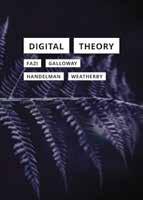
M. BEATRICE
FAZI, ALEXANDER R. GALLOWAY, MATTHEW
HANDELMAN, LEIF WEATHERBY
The first English translation of a radical and influential theory of art by a leader of Poland’s avant-garde
After World War II, socialist realism became the official state doctrine of art in Poland, with abstract works deemed counterrevolutionary and forbidden from public view. Władysław Strzemiński, a leader of the Polish constructivist avant-garde, developed a treatise of visual consciousness as a foundation for progressive art, emphasizing art’s autonomy. His application of Marxist aesthetics to the physiology of seeing is expressed in Theory of Seeing, which was published posthumously in 1958 by his students from notes collected from his lectures.
Preceding the comparable perspectives developed by Jacques Rancière, David Hockney, and John Berger, and even the cinema of Jean-Luc Godard, Strzemiński’s Theory of Seeing introduces the radical and groundbreaking ideas of one of Poland’s most important artists to English-speaking audiences for the first time.
Władysław Strzemiński (1893–1952) was a prominent artist and theorist of Polish modernism. He collaborated with Rodchenko and Malevich, and, with the avantgarde sculptor Katarzyna Kobro, cofounded the a.r. group. Their efforts led to the establishment of the International Collection of Modern Art at the Muzeum Sztuki in Łódź, Poland. Strzemiński was a cofounder of the State Higher School of Fine Arts in Łódź. Daniel Muzyczuk is interim director of Muzeum Sztuki in Łódź, Poland.
ART/THEORY
$34.95x Paper ISBN: 978-1-5179-2081-4
$140.00xx Cloth ISBN: 978-1-5179-2080-7
JULY
312 pages 217 b&w illustrations 7 x 10 e-flux Classics Series
Distributed for e-flux
Proposes a powerful new theoretical approach to the concept of the digital
Digital Theory argues that the digital is theoretical and should be understood not uniquely in terms of consumer electronics but rather more broadly as a form of mediation using discrete units. Building on this definition, the three essays in this volume explore digitality’s relation to thinking, signs, and difference. Taken together, these works expound productively and provocatively on the digital’s far-reaching theoretical potential.
M. Beatrice Fazi is a philosopher known for her work in the philosophy of computation, of technology, and of media. Alexander R. Galloway is a writer and computer programmer working on issues in philosophy, technology, and theories of mediation. Matthew Handelman is associate professor of German and core faculty in the digital humanities at Michigan State University. Leif Weatherby is associate professor of German and director of the Digital Theory Lab at New York University.
DIGITAL CULTURE/THEORY
$18.00x Paper ISBN: 978-1-5179-2019-7
$18.00 Retail e-book ISBN: 978-1-4529-7401-9
DECEMBER
128 pages 1 b&w illustration 5 x 7 In Search of Media Series
Retail e-book files for this title are screen-reader friendly with image accompanied by short alt text and/or extended description.

Journal of the Vernacular Architecture Forum
MICHAEL J. CHIARAPPA AND MARGARET M. GRUBIAK, EDITORS
Subscription rates: VAF members receive this journal.
Individuals: $65.00; Institutions: $167.00.
>> Published twice per year.

TROY R. E. PADDOCK, EDITOR
Subscription rates: IAESP members receive this journal. Individuals: $35.00; Institutions: $208.00.
>> Published twice per year.
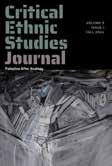
NEEL AHUJA, IYKO DAY, AND RANA JALEEL, EDITORS
Open access edition available at Manifold (http://manifold.umn.edu).
>> Published twice per year.
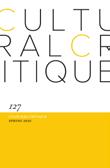
CESARE CASARINO, FRIEDA EKOTTO, MAGGIE HENNEFELD, JOHN MOWITT, AND SIMONA SAWHNEY, EDITORS
Subscription rates: Individuals: $50.00; Institutions: $153.00.
>> Published four times per year.
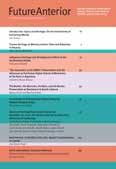
Journal of Historic Preservation History, Theory, and Criticism
JORGE OTERO-PAILOS, EDITOR
Subscription rates: Individuals: $32.50; Institutions: $87.00.
>> Published twice per year.
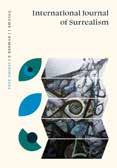
KATHARINE CONLEY AND ALYCE MAHON, EDITORS
Subscription rates: ISSS members receive this journal. Individuals: $60.00; Institutions: $250.00.
>> Published twice per year.
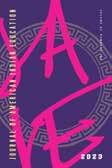
BRYAN M C KINLEY JONES BRAYBOY AND TERESA L. M C CARTY, EDITORS
Subscription rates: Individuals: $38.00; Institutions: $100.00.
>> Published three times per year.

Annual Journal of the Association for Gravestone Studies
ELISABETH L. ROARK, EDITOR
Subscription rates: AGS members receive this journal. Individuals: $65.00; Institutions: $100.00.
>> Published once per year.
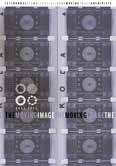
The Journal of the Association of Moving Image Archivists
DEVIN ORGERON, EDITOR
Subscription rates: AMIA members receive this journal. Individuals: $32.50; Institutions: $100.00.
>> Published twice per year.

GINA STARBLANKET AND HEIDI
KIIWETINEPINESIIK STARK, EDITORS
Subscription rates: NAISA members receive this journal: $25–$200 annually. Libraries can subscribe through Project MUSE.
>> Published twice per year.

SANDRA ANNETT AND FRENCHY LUNNING, EDITORS

The next issue will be available through Subscribe to Open on Project MUSE.
Subscription rates: Individuals: $44.00; Institutions: $100.00.
>> Published twice per year.
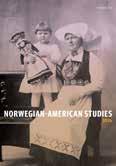
The Journal of the Norwegian-American Historical Association
ANNA M. PETERSON, EDITOR
Subscription rates: NAHA members receive this journal. Individuals: $50.00; Institutions: $123.00.
>> Published once per year.
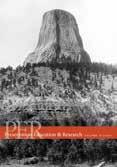
Journal of the National Council for Preservation Education
EMILY BERGERON, EDITOR
Subscription rates: Individuals: $75.00; Institutions: $86.00.
>> Published once per year.

A Journal of Native American Studies
LLOYD L. LEE, EDITOR
Subscription rates: Individuals: $21.50; Institutions: $67.00.
>> Published twice per year.
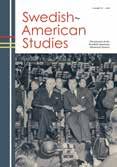
The Journal of the Swedish-American Historical Society
MARK SAFSTROM, EDITOR
Subscription rates: SAHS members receive this journal. Individuals: $60.00; Institutions: $75.00.
>> Published once per year.

Studies in Global Asias
TINA CHEN, EDITOR
Verge celebrates 10 years of publication in 2025.
Subscription rates: Individuals: $38.00; Institutions: $133.50.
>> Published twice per year.
For a full list of present and past issues, visit Project MUSE (muse.jhu.edu). Our Subscribe to Open profile is at z.umn.edu/MNS20, where the next issue of Mechademia: Second Arc will be available open access.
To check the availability of back issues and to place a single copy order, please email journals@umn.edu.
For more information on University of Minnesota Press journals, visit www.upress.umn. edu/journals.
Note on pricing: For print subscriptions with delivery addresses outside the U.S., add $8.00 to listed prices to cover postage surcharge.

In 2025 the University of Minnesota Press celebrates 100 years of creative publishing that continuously gains international renown and influence while remaining strongly connected to the peoples, cultures, and environments of Minnesota and the Upper Midwest.
z.umn.edu/ump100
To support our nonprofit publishing mission, visit z.umn.edu/GiveToUMP


Fax (800) 621-8476 or (773) 702-7212
University of Minnesota Press c/o Chicago Distribution Center 11030 South Langley Avenue Chicago, IL 60628
The Press podcast is a place where authors join peers, scholars, and friends in conversation. Episodes are available on Apple, Spotify, and most places podcasts are published. z.umn.edu/ump_pod
Pubnet
PUBNET@202-5280
Sales Call
If you would like a visit from a sales representative, call the representative for your region (listed at right) or call sales manager Matt Smiley at (612) 301-1931.
Manifold is a free-to-install and easy-to-use platform to publish and read networked, media-rich books on the web. z.umn.edu/AboutManifold
U.S. SALES REPRESENTATIVES
Minnesota and all other states not included below:
Matt Smiley
University of Minnesota Press
111 Third Avenue South, Suite 290
Minneapolis, MN 55401-2520
Phone: (612) 301-1931
E-mail: mwsmiley@umn.edu
Parson Weems' Publisher Services
(Key national accounts, Albany Metro & Upstate New York, New Jersey, Maryland, Delaware, Connecticut, and eastern Pennsylvania)
Eileen Bertelli
1101 Tamiami Trail S, Suite 102-I Venice, FL 34285
Phone: (845) 987-7233
Cell: (845) 492-7309
Fax: (866) 761-7112
Email: eileenbertelli@parsonweems.com
(Massachusetts, Rhode Island, Maine, Vermont, New Hampshire)
Christopher R. Kerr 11 Penhallow Street
Boston, MA 02124-2307
Phone: (914) 329-4961
Fax: (866) 861-0337
Email: chriskerr@parsonweems.com
(New York City Metro, Hudson Valley, Philadelphia Metro, Washington, DC Metro)
Jason Kincade
19 Bushwick Avenue, 3R Brooklyn, NY 11211
Phone: (347) 244-2165
Fax: (866) 861-0337
Email: jasonkincade@parsonweems.com
(National Accounts, Western PA & Western NY)
Brendan Coyne 256 Ridge Ave. State College, PA 16803
Phone: (443) 854-5504
Fax: (866) 861-0337
Email: brendancoyne@parsonweems. com
(Illinois, Indiana, Iowa, Kansas, Kentucky, Michigan, Missouri, Nebraska, North Dakota, Ohio, South Dakota, Wisconsin)
Abraham Associates
210 Edge Place
Minneapolis, MN 55418
Phone: (800) 701-2489
Fax: (651) 389-9299
Email: ted@abrahamassociatesinc.com
(Illinois, Wisconsin, Iowa, select Kentucky)
John Mesjak
Phone: 815-762-0598
Email: john@abrahamassociatesinc.com
(select Iowa, Kansas, Missouri, Nebraska, North Dakota, South Dakota, select Wisconsin)
Emily Johnson
Phone: 800-701-2489
Email: emily@abrahamassociatesinc.com
(northern Indiana, Michigan, northern Ohio, select Illinois)
Sandra Law
Phone: 630-352-8640
Email: sandra@abrahamassociatesinc. com
(southern Indiana, southern Ohio, Kentucky, new store openings & assistance)
Alice Mesjak
Phone: 779-777-0190
Email: alice@abrahamassociatesinc.com
(Alabama, Arkansas, Florida, Georgia, Louisiana, Mississippi, North Carolina, Oklahoma, South Carolina, Tennessee, Texas, Virginia)
Bill McClung & Associates 20540 State Hwy 46W, Suite 115 Spring Branch, TX 78070
Fax: (888) 311-8932
Bill McClung
Cell: (214) 505-1501
E-mail: bmcclung@ix.netcom.com
Terri McClung
Cell: (214) 676-3161
E-mail: tmcclung@ix.netcom.com
Karel/Dutton Group
(Select Northern California, Hawaii)
Howard Karel
2033 Lake Street
San Francisco, CA 94121
Phone: (415) 668-0829
Fax: (415) 668-2463
Email: hkarel@comcast.net
(Arizona, Colorado, New Mexico, Utah, Wyoming)
Dory Dutton 111 Pueblito Rd.
Corrales, NM 87048
Phone: (818) 269-4882
Fax: (480) 247-5158
Email:dory.dutton@valleyvillagemail.com
(Northern California, Oregon, Idaho, Montana, Alaska, Northern Nevada)
Ellen Towell
2033 Lake Street
San Francisco, CA 94121
Phone: (415) 298-2267
Fax: (415) 668-2463
Email: ellentowell.kdg@gmail.com
(Northern California, Washington)
Lise Solomon
1047 Stannage Ave. Albany, CA 94706
Phone: (510) 528-0579
Fax: (510) 900-1088
Email: lise.solomon@sonic.net
(Southern California)
Mark O’Neal
4941 Defiance Way
San Diego, CA 92115
Phone: (562) 587-0956
Fax: (877) 847-1619
Email: oneal.mark@gmail.com
EXPORT SALES REPRESENTATIVES
CANADA
University of Toronto Press
Distribution 5201 Dufferin Street
Toronto
M3H 5T8
Phone: 1-800-565-9523 / (416) 667-7791
Fax: 1-800-221-9985 / (416) 667-7832
Email: utpbooks@utpress.utoronto.ca
By EDI through Pubnet: SAN 115 1134
ORDERS WITHIN THE UK, EUROPE, AFRICA, MIDDLE EAST, AND ASIA
(EXCLUDING JAPAN) MAY BE SENT TO:
University of Minnesota Press
c/o Wiley
European Distribution Centre
New Era Estate
Oldlands Way
Bognor Regis
West Sussex PO22 9NQ, UK
Phone: +44 (0) 1243 843291
UK, Europe, Middle East, and Africa Trade Email: trade@wiley.com
Asia-Pacific Trade Email: mng.csd@wiley.com
SALES INQUIRIES
UK, EUROPE, MIDDLE EAST, AFRICA, AND ASIA (EXCLUDING JAPAN)
Mare Nostrum Group 39 East Parade
Harrogate North Yorkshire HG1 5LQ
Phone: 44 (0) 1423 526350
Email:
enquiries@combinedacademic.co.uk www.combinedacademic.co.uk
CANADA
Lexa Publishers’ Representatives
Mical Moser
Phone: (718) 781-2770
Fax: (514) 843-9094
E-mail: micalmoser@me.com
AUSTRALIA, NEW ZEALAND
NewSouth Books
c/o Alliance Distribution Services (ADS) 9 Pioneer Ave, Tuggerah NSW 2259
Australia
Tel: +61 (2) 4390 1300
Email: adscs@alliancedist.com.au www.newsouthbooks.com.au
JAPAN
MHM Limited 1-1-13-4F, Kanda-Jimbocho Chiyoda-ku 101-0051, Tokyo Japan
Phone: 81-3-3518-9181
Fax: 81-3-3518-9523
Email: sales@mhmlimited.co.jp
University of Minnesota Press fulfillment operations are through the Chicago Distribution Center. The address is:
University of Minnesota Press
c/o Chicago Distribution Center 11030 South Langley Ave. Chicago, IL 60628 Phone: (800) 621-2736 or (773) 702-7000 Fax: (800) 621-8476 or (773) 702-7212
We provide pubnet access. Our address is: PUBNET@202-5280.
For our current discount structure, please contact our sales manager at mwsmiley@umn.edu.
We use three discount structure classes: Trade, Short, and Super Short. Short titles are marked with “x”, super short titles are marked “xx”, and trade titles are not marked.
Address for returns: Returns Department University of Minnesota Press c/o Chicago Distribution Center 11030 S. Langley Ave. Chicago, IL 60628
Accepted at any time for replacement.
Claims must be made within 30 days of invoice date. Indicate whether you wish replacement copies or cancellation of order.
Invoice number, date, and packing list with ISBN must accompany shipment. Returned copies must be clean and in saleable condition (no pricing residue, bent corners, or shelf-worn covers will be accepted). The distribution center retains the right of final decision determining the saleability of returned books. Returns deemed unsaleable will be returned to the bookseller at the bookseller’s expense.
PERIOD OF ELIGIBILITY
Eighteen months from the invoice date. Superseded editions returnable up to 90 days after publication of new edition. OSI or OP titles not returnable 60 days after declaration of status.
CREDIT ALLOWED
100% with invoice information. Returns without invoice information will be checked against most recent purchases and credited at those discounts. Books not purchased from the University of Minnesota Press distribution center will be returned to the bookseller at the bookseller’s expense.
Prices marked “x” are short discount
Prices marked “xx” are super short discount
Prices unmarked are trade discount
ANZ Not for sale in Australia and New Zealand
CAN Not for sale in Canada
COBE Not for sale in the British Commonwealth except Canada
CUSA For sale only in the United States, its dependencies, the Philippines, and Canada
EU Not for sale in Europe
IND Not for sale in India, Pakistan, Myanmar, Bhutan, Bangladesh, Nepal, and Sri Lanka
NAM For sale only in North America
NSA For sale only in North and South America
OBE World rights except for the British Commonwealth
UK & IRE Not for sale in the UK and Ireland
USA For sale only in the United States, its dependencies, and the Philippines
X World rights except for the European Continent
Jeff Moen
Rights and Contracts
Phone: (612) 301-1995
E-mail: moenx017@umn.edu
The University of Minnesota is an equal opportunity educator and employer.
Member of the Association of University Presses
FALL/WINTER 2025–26



